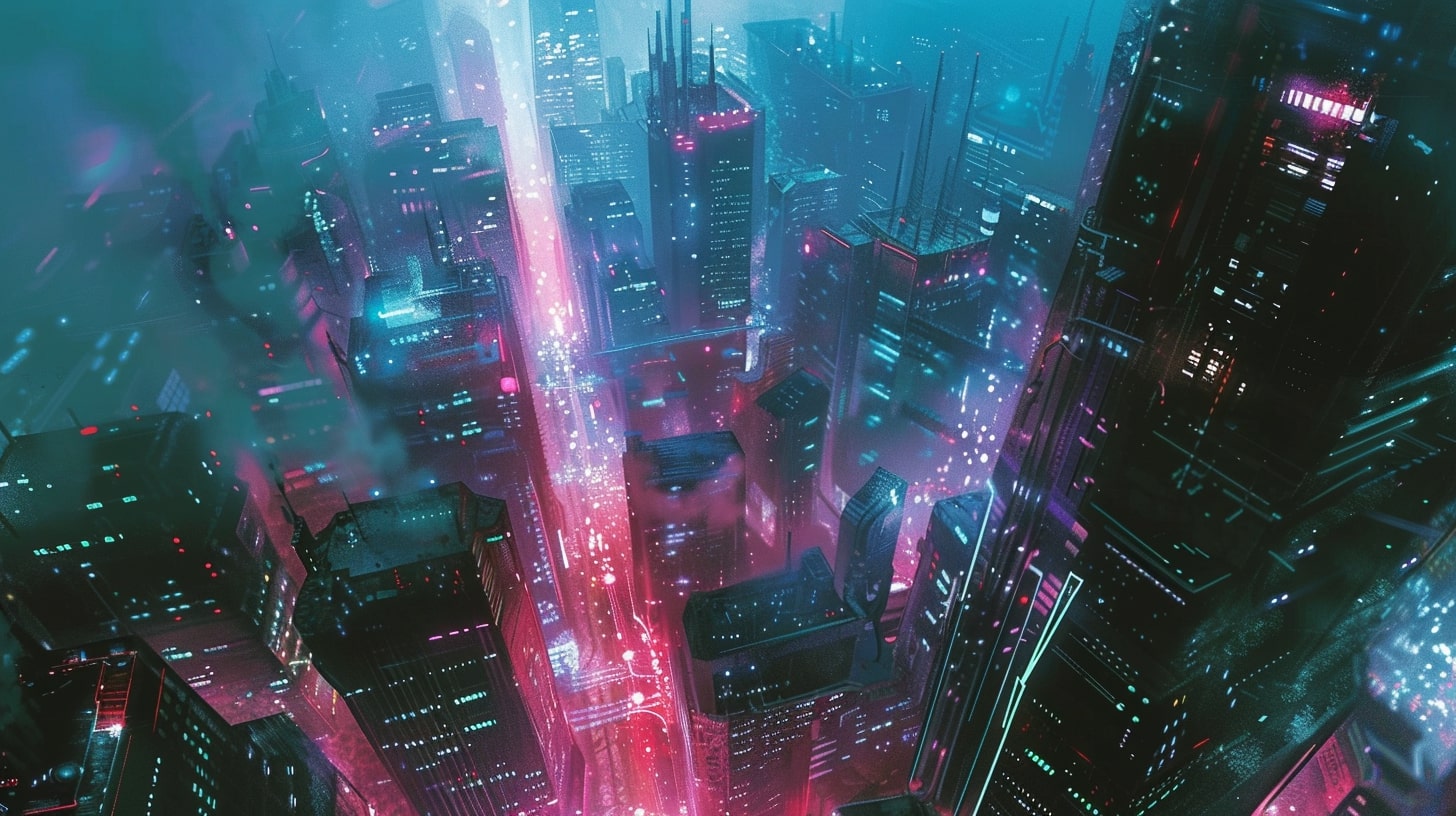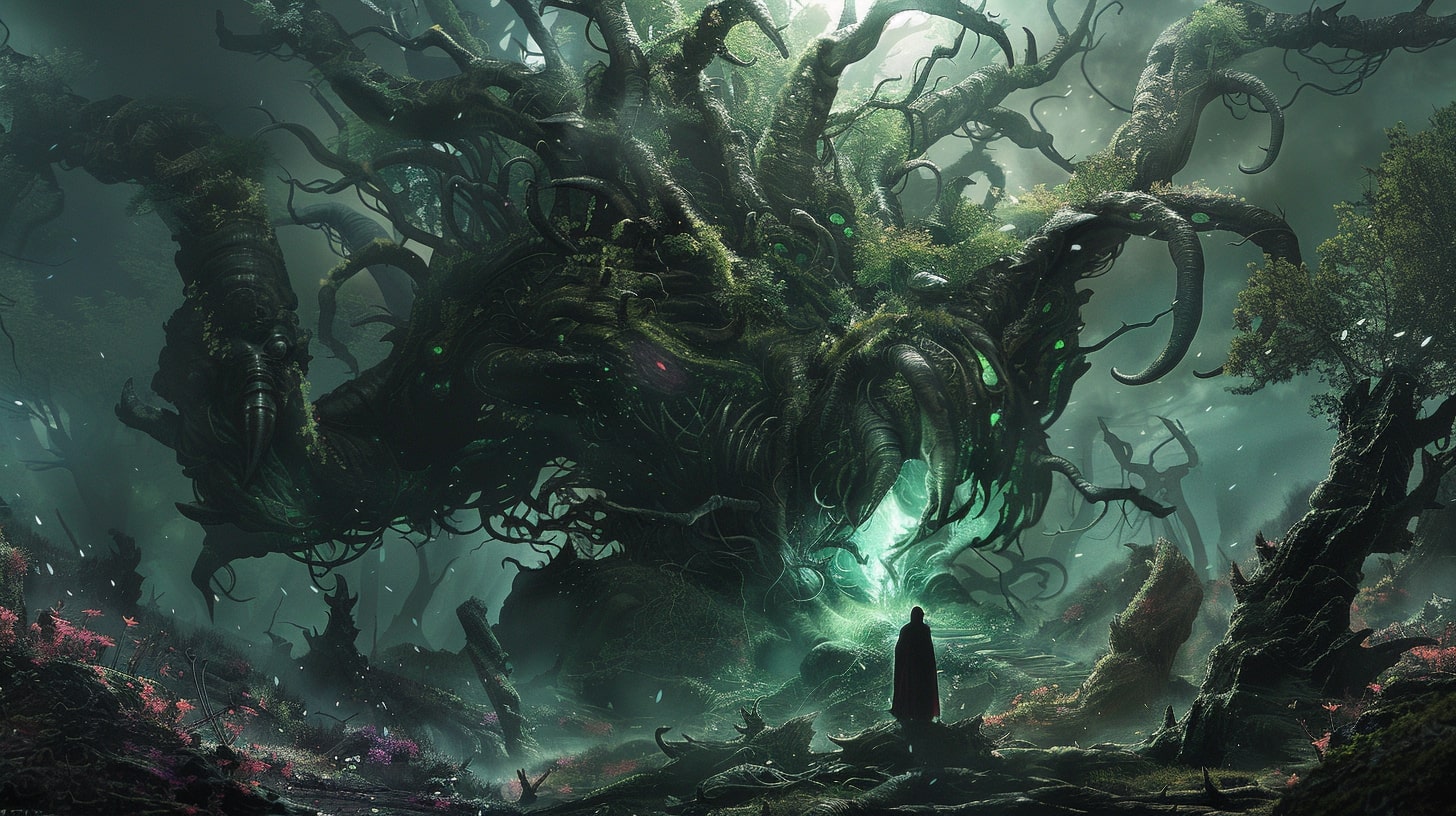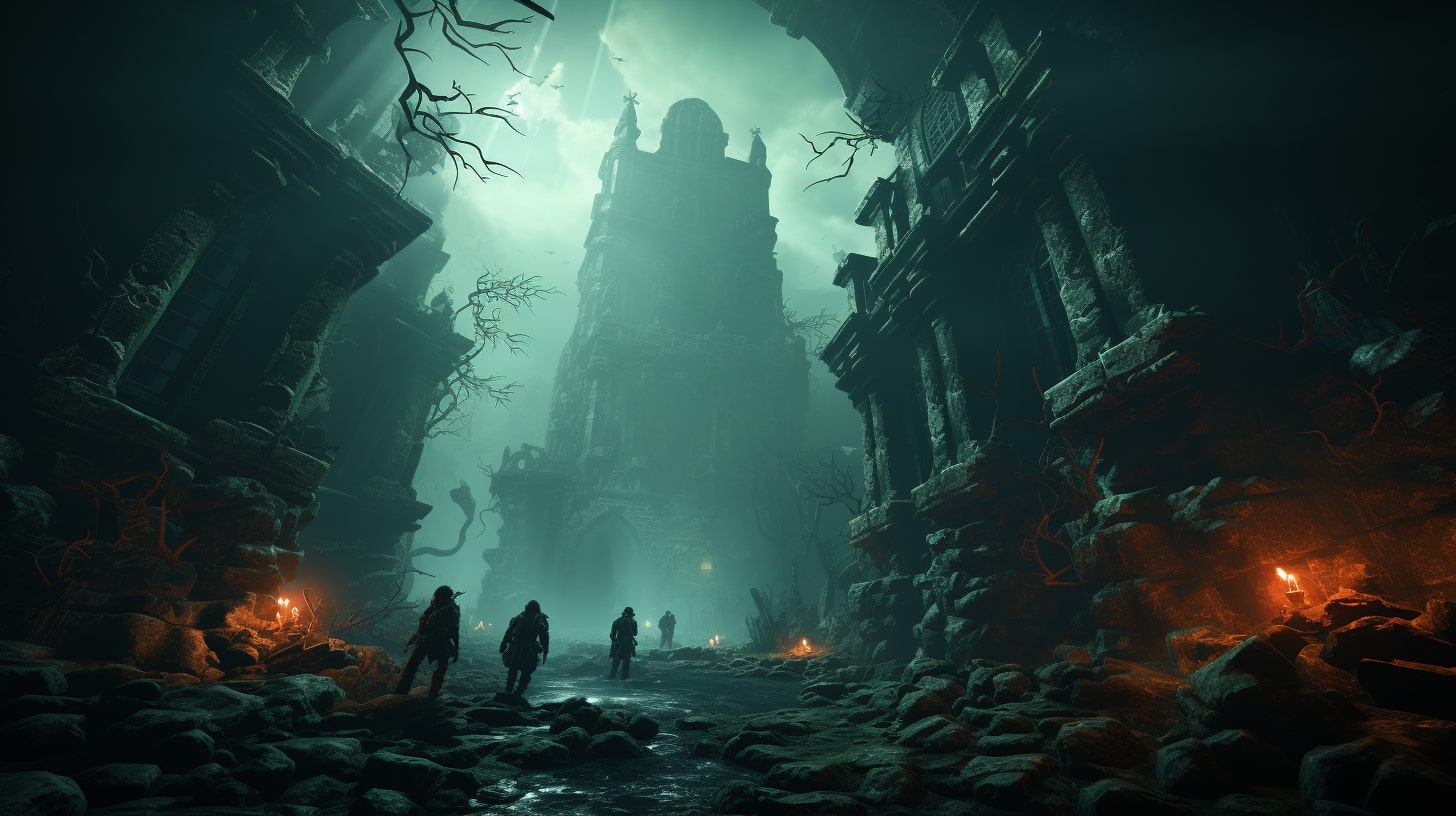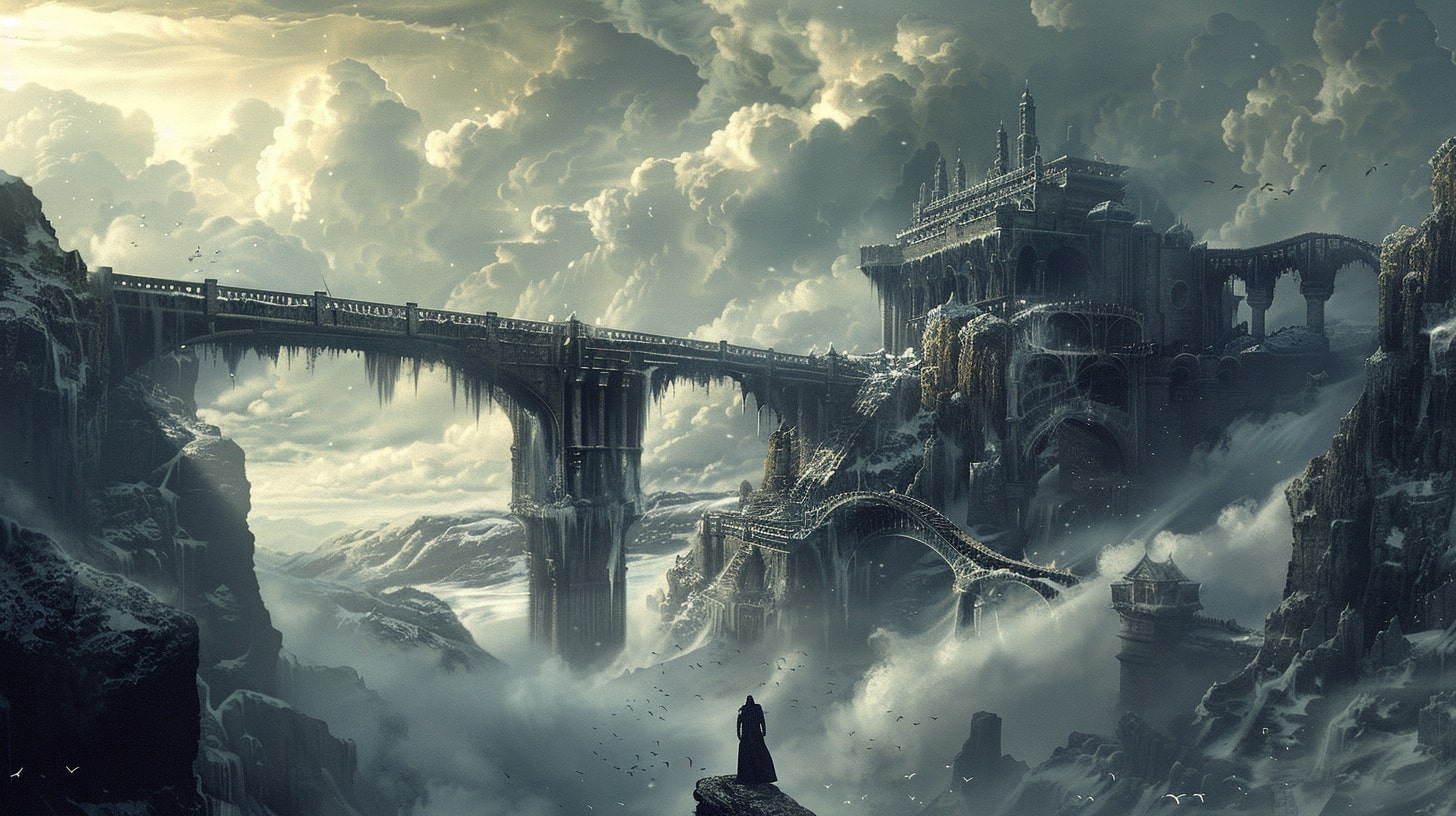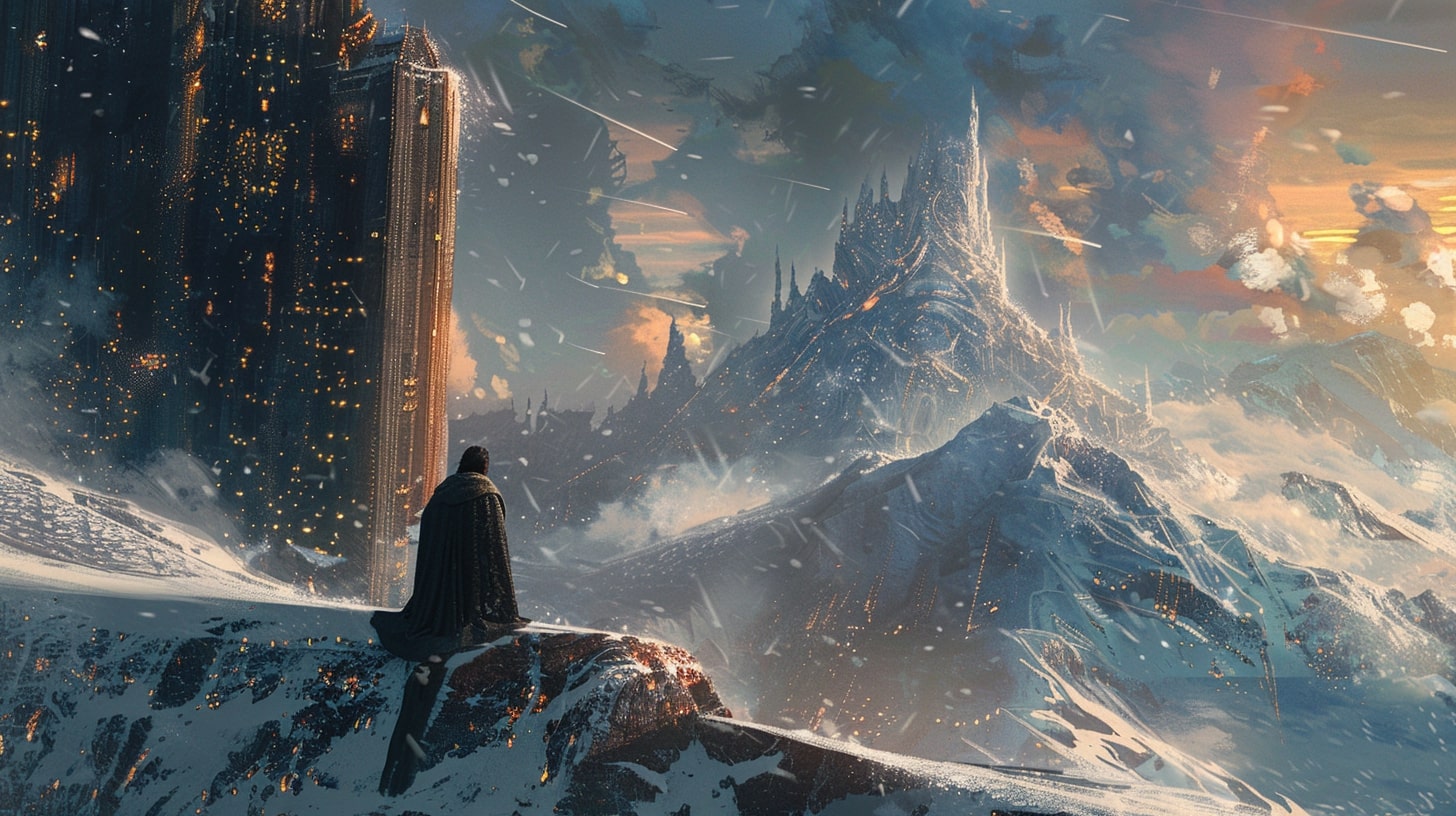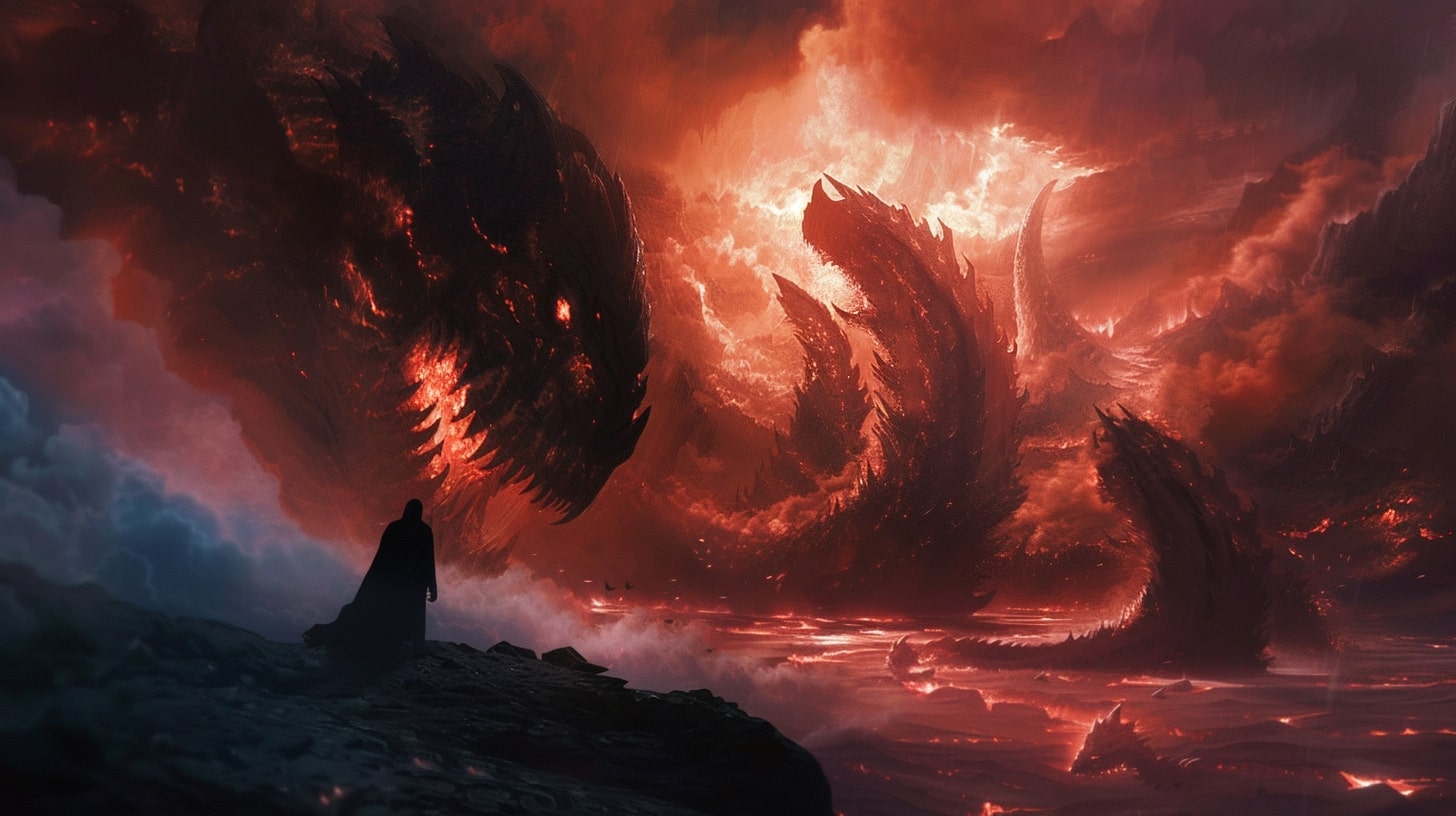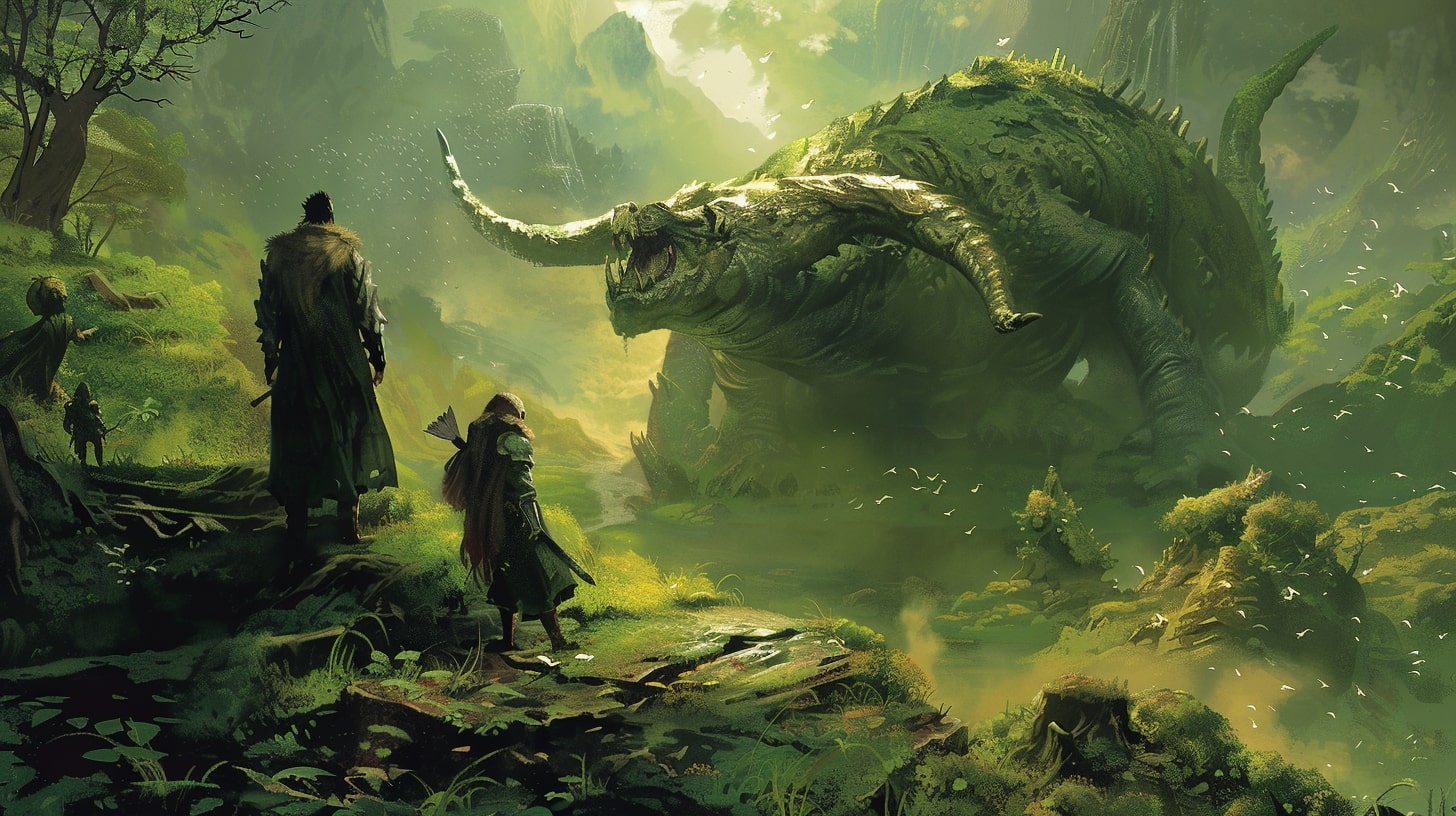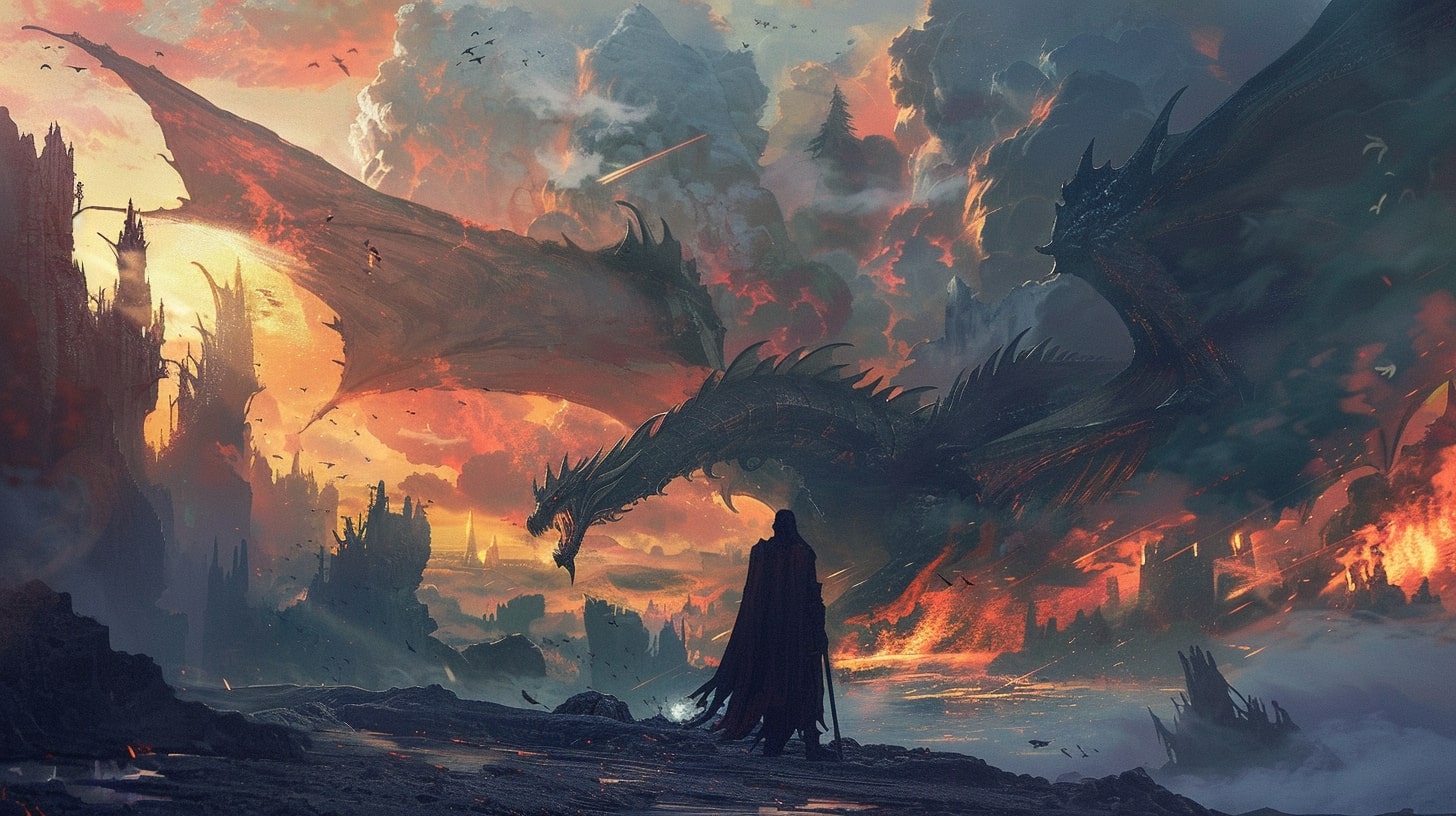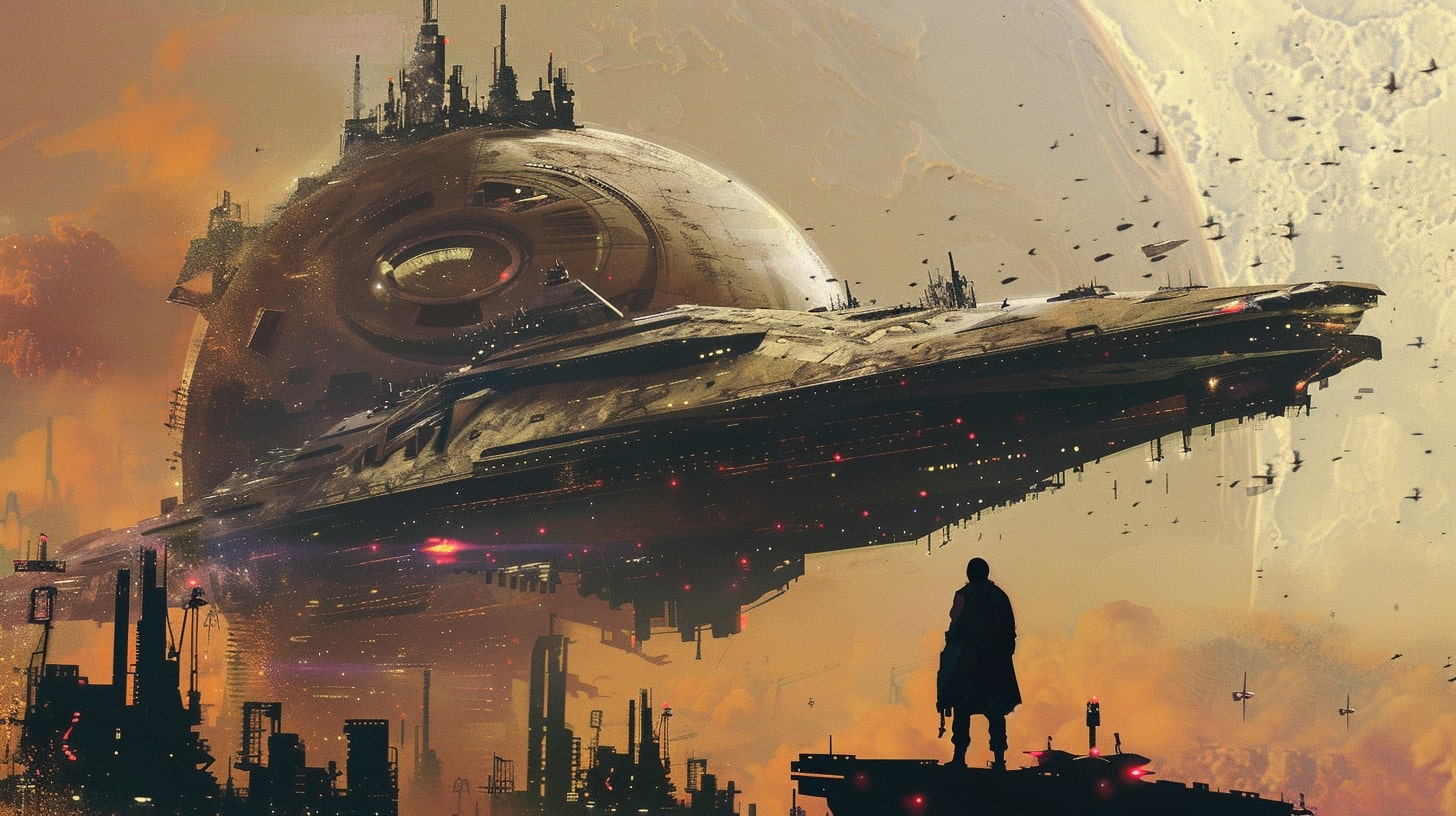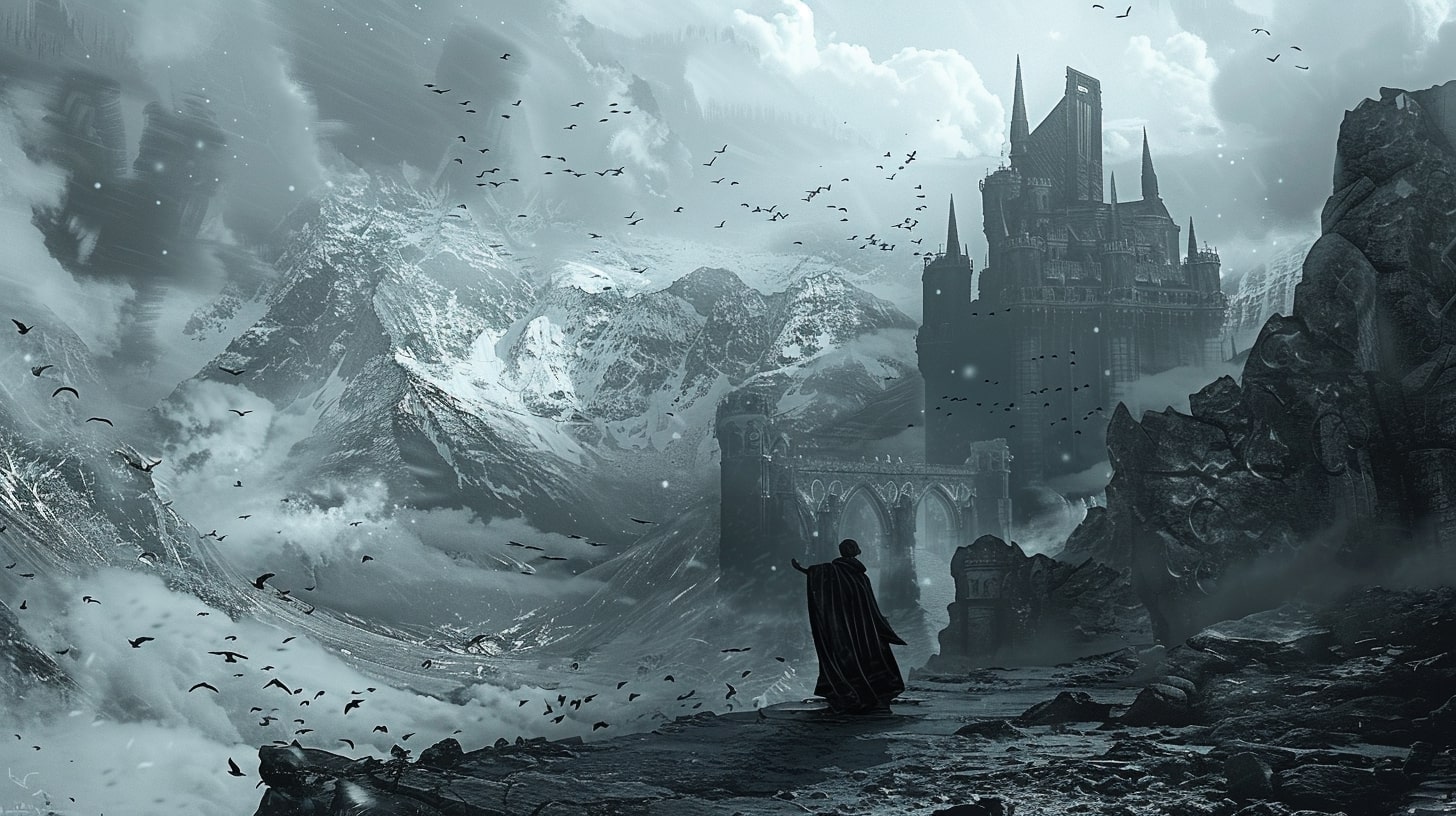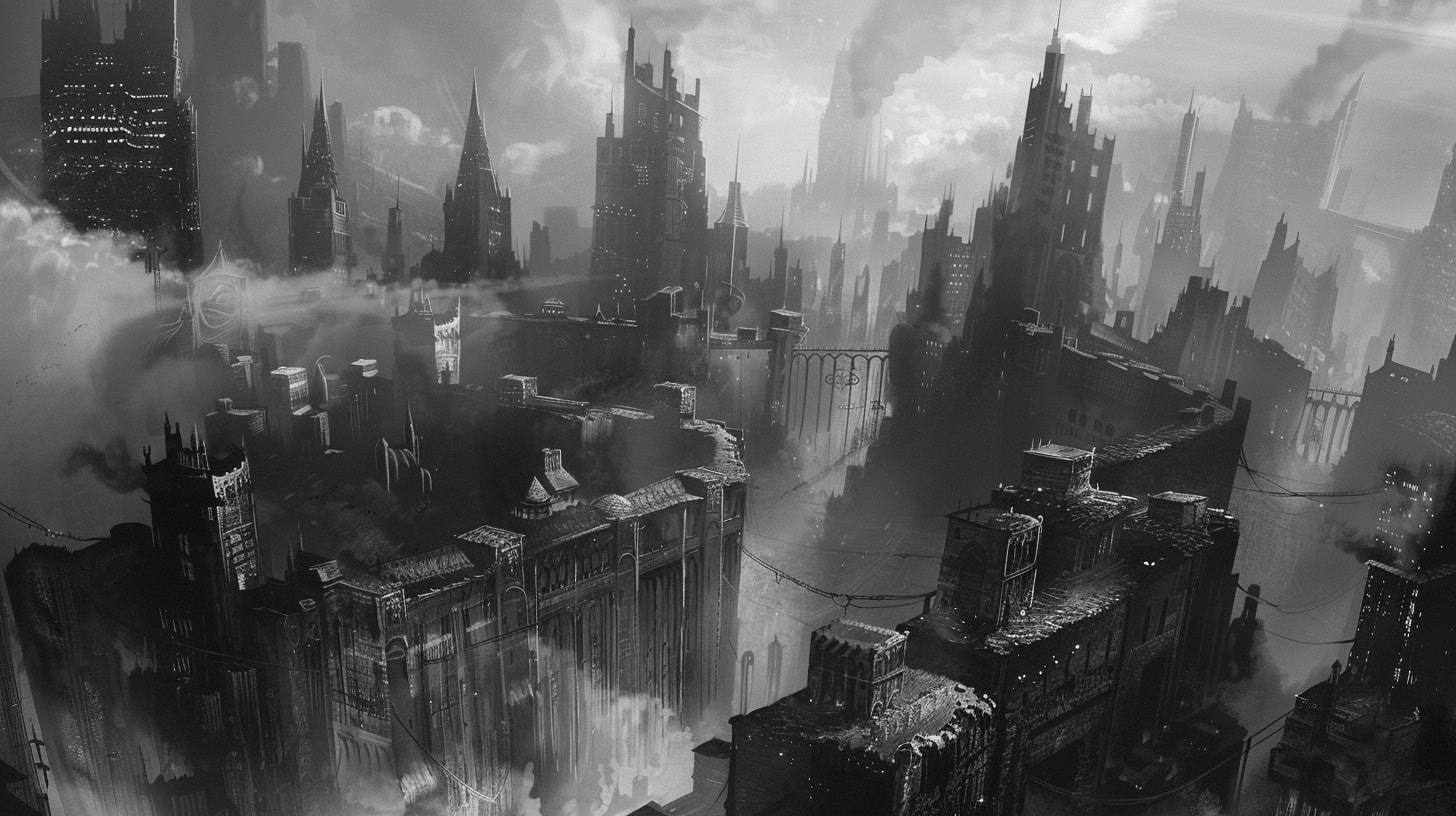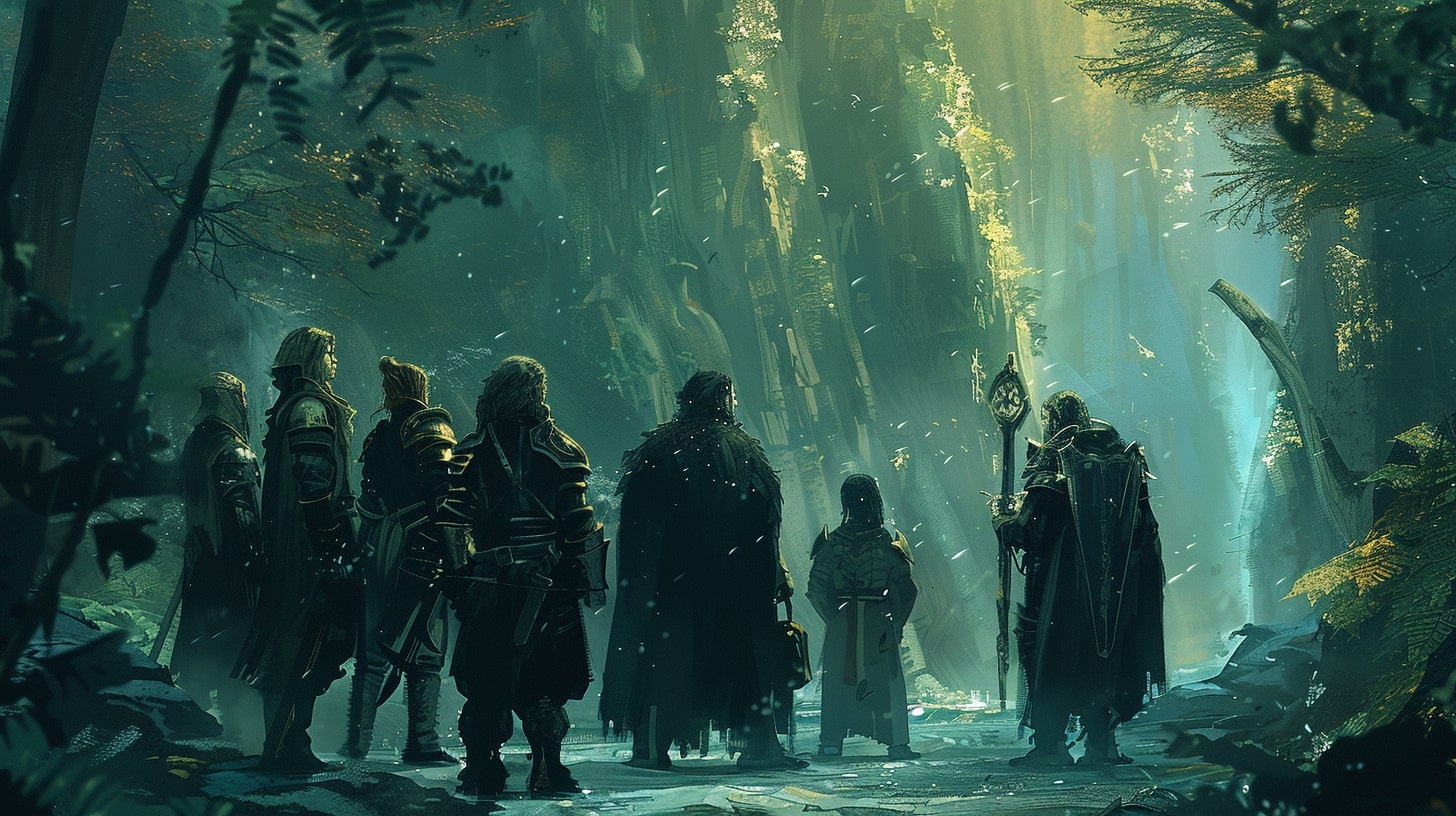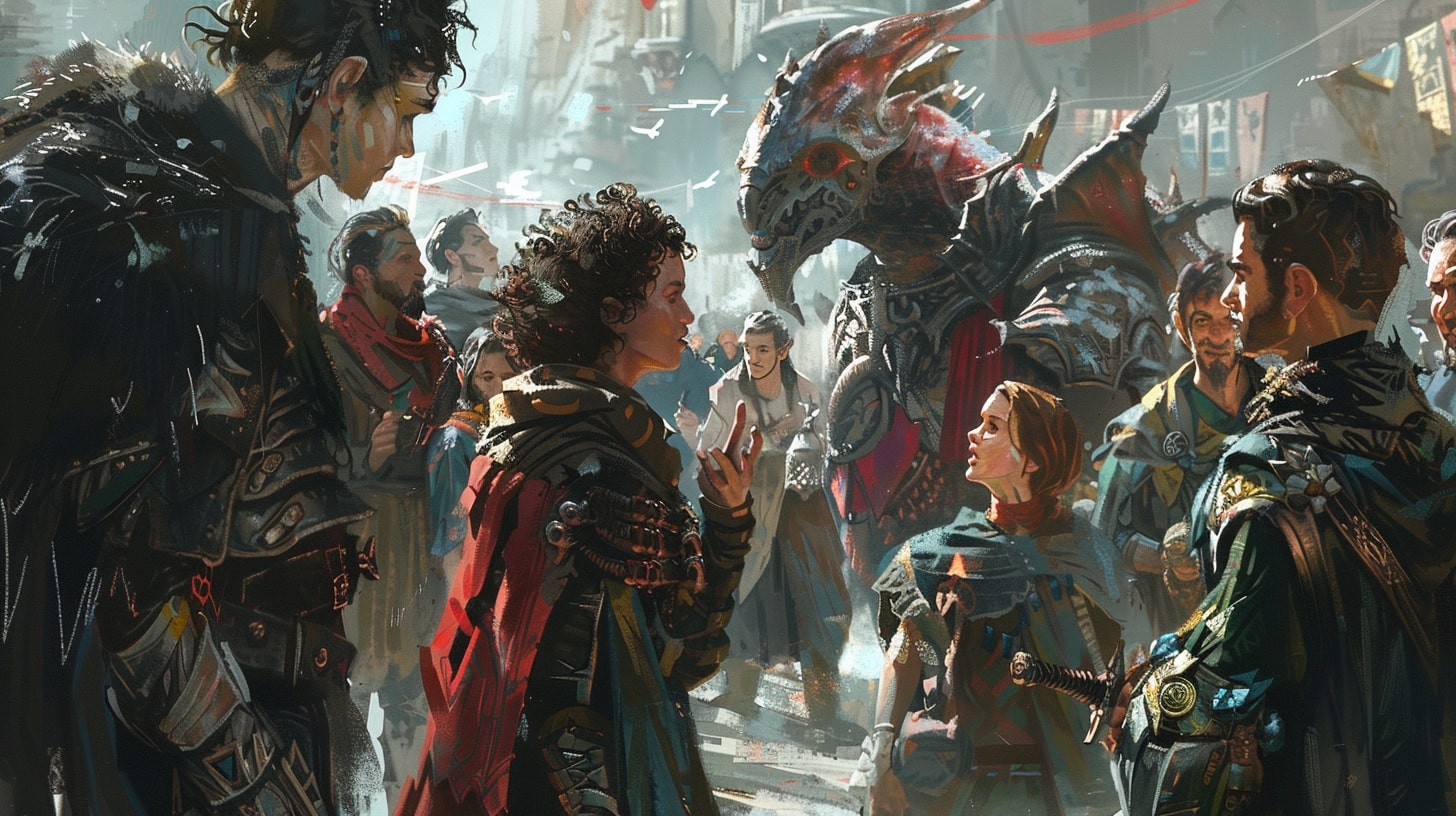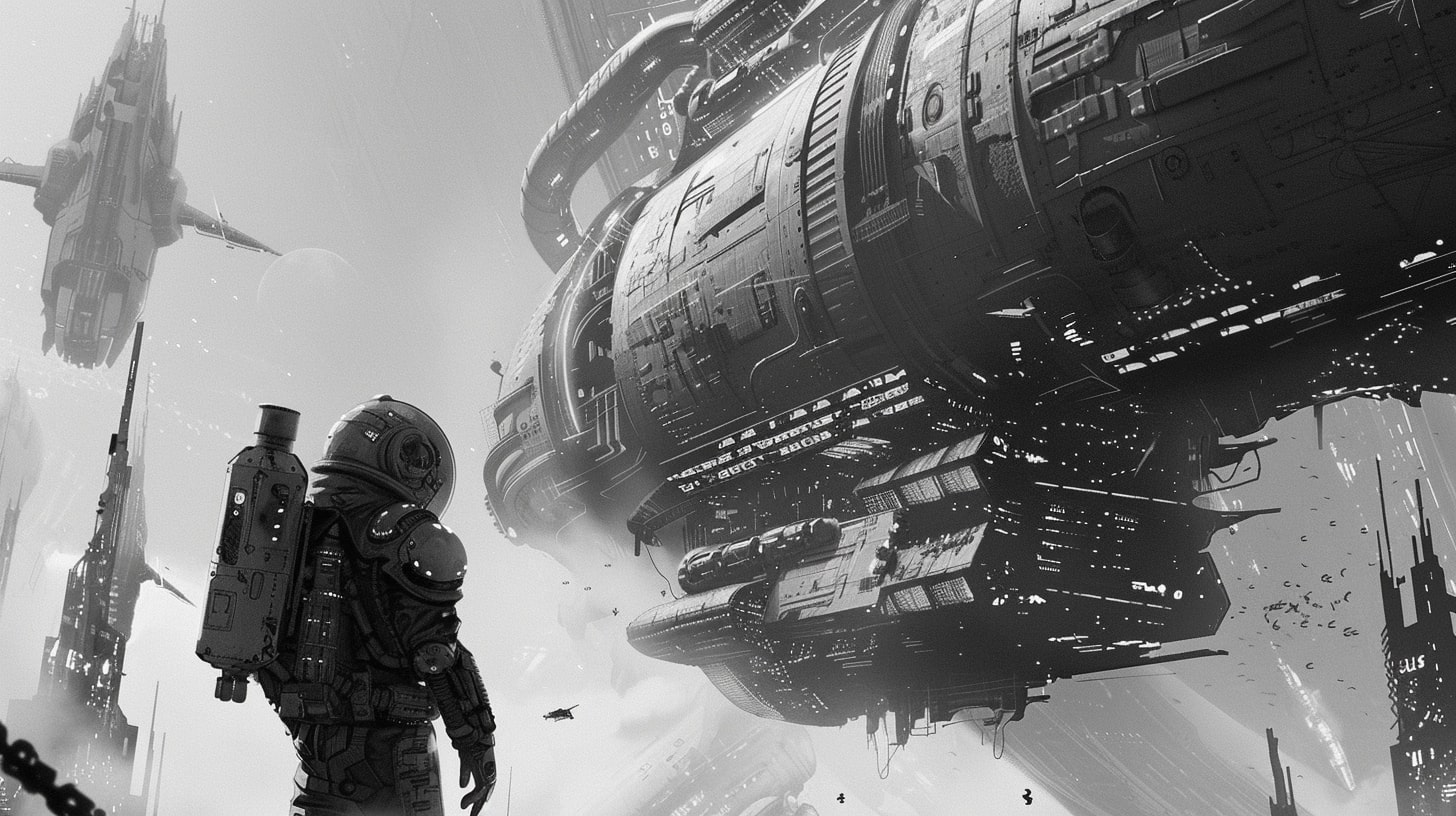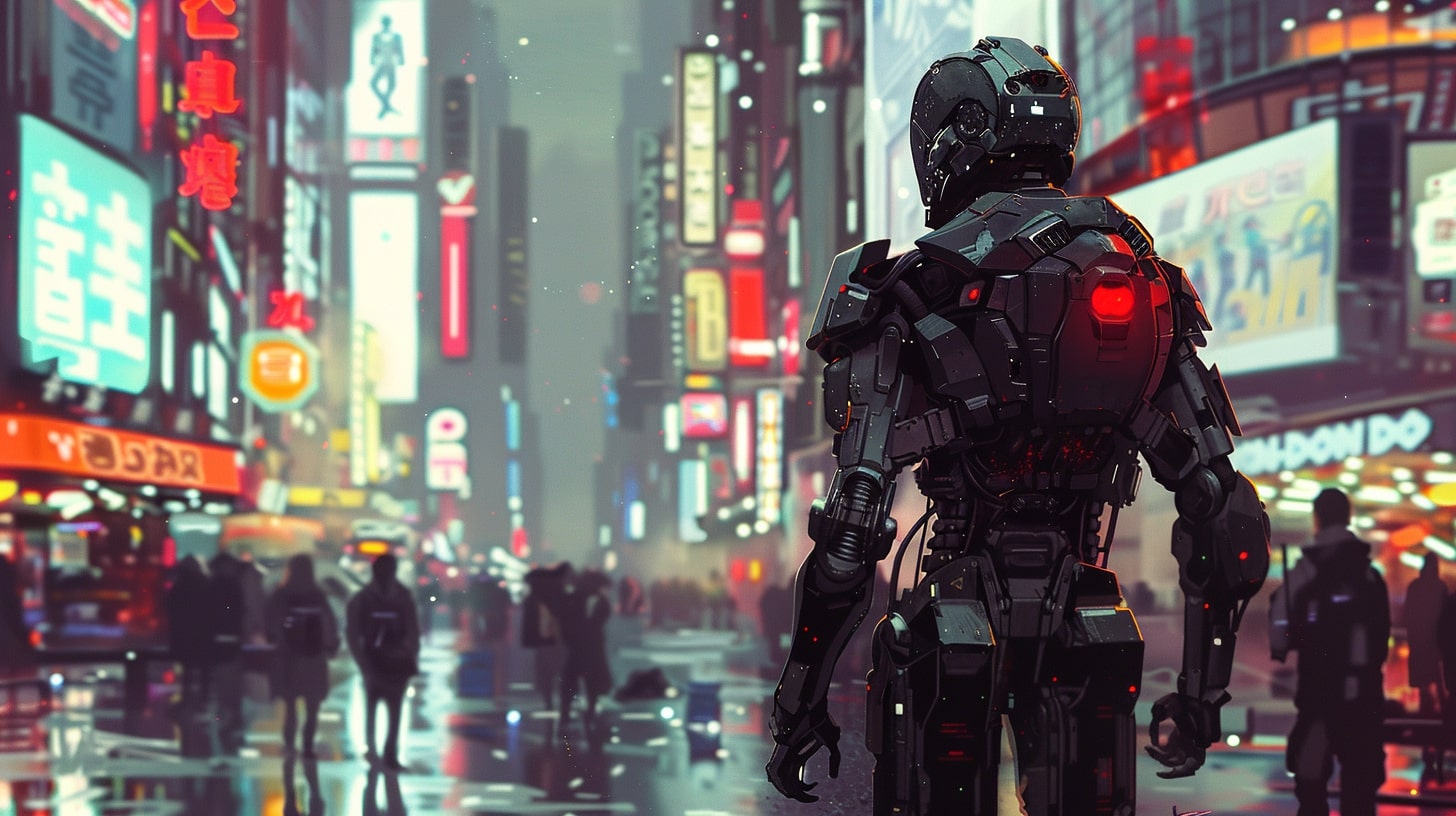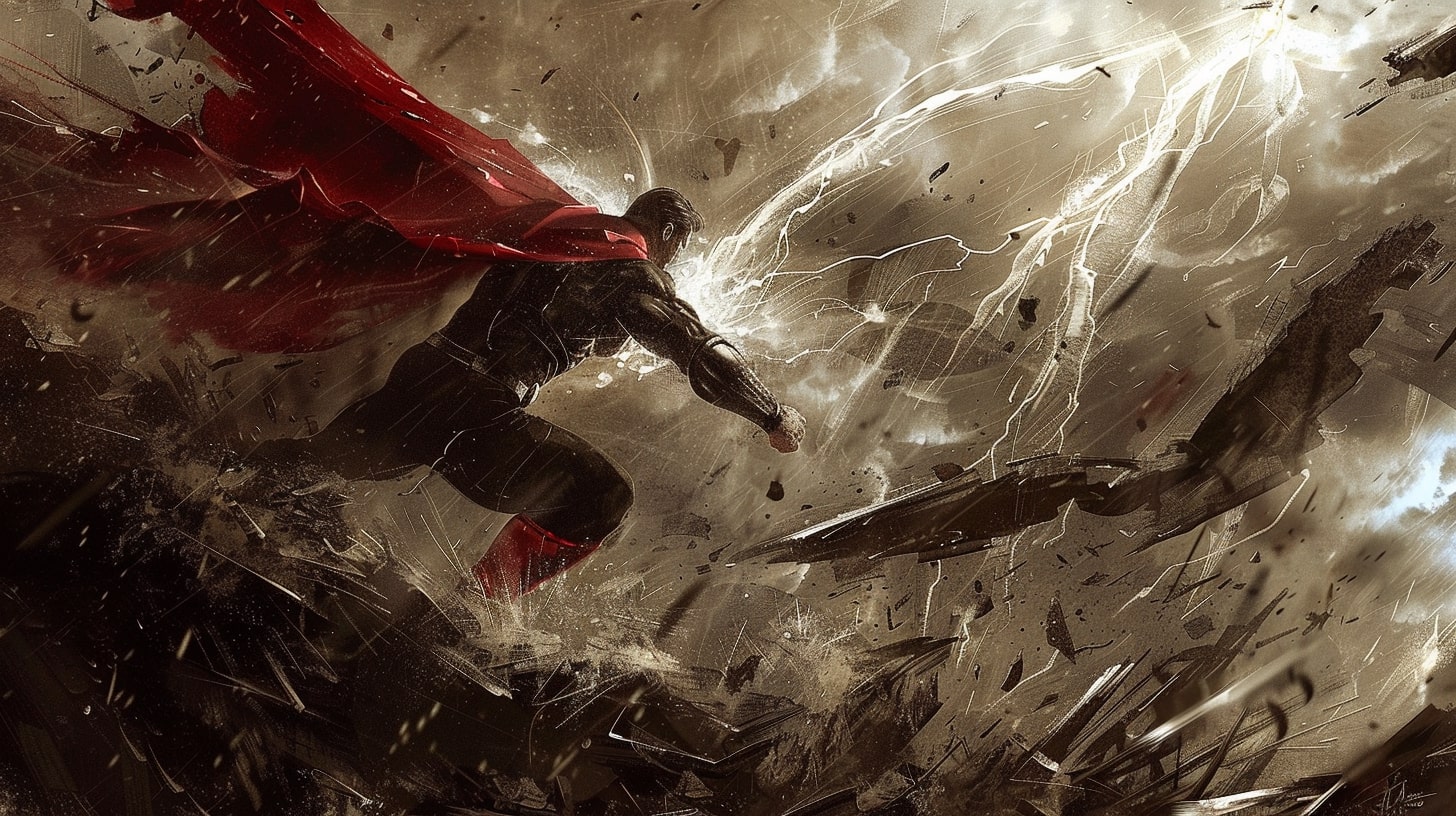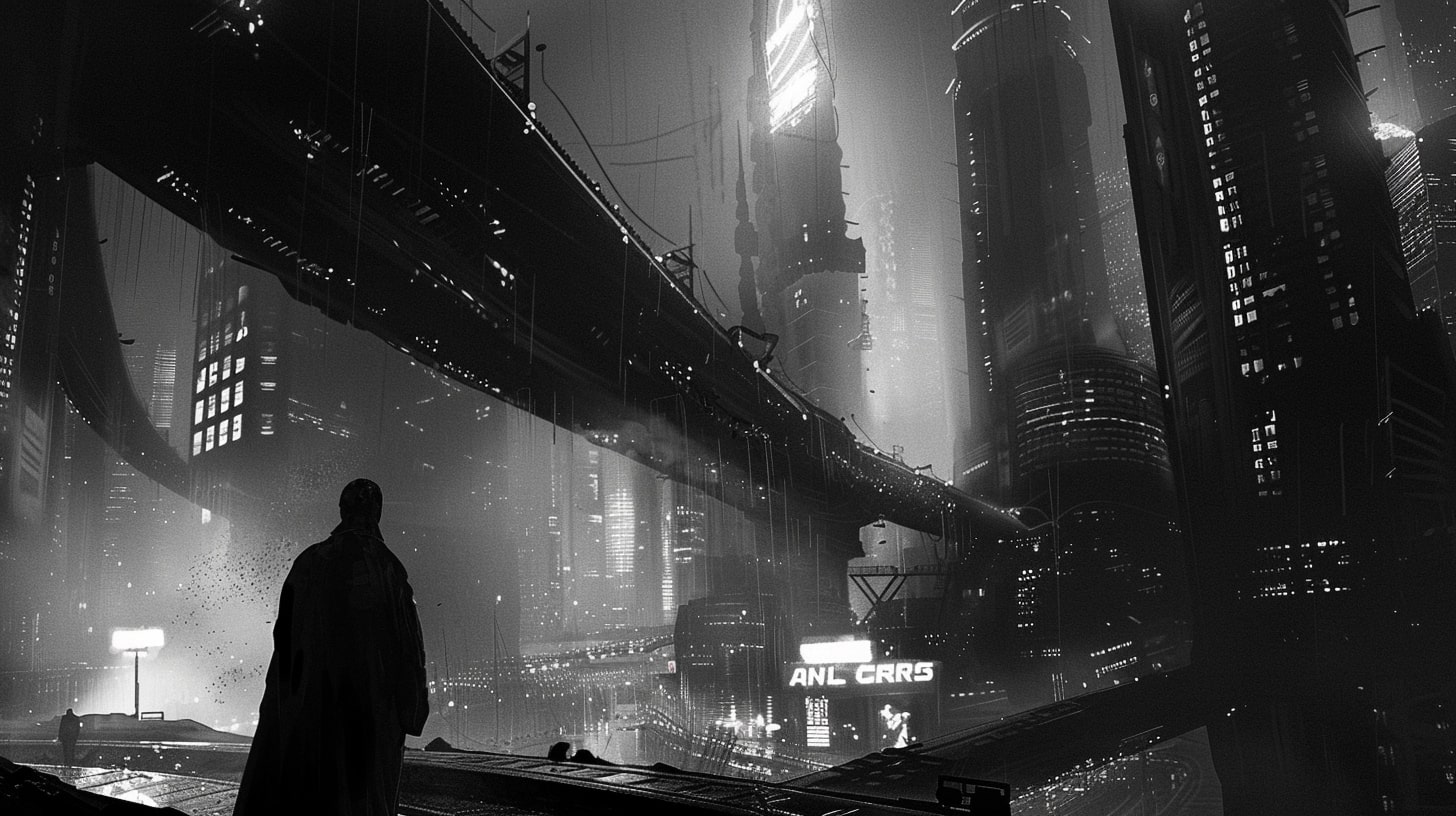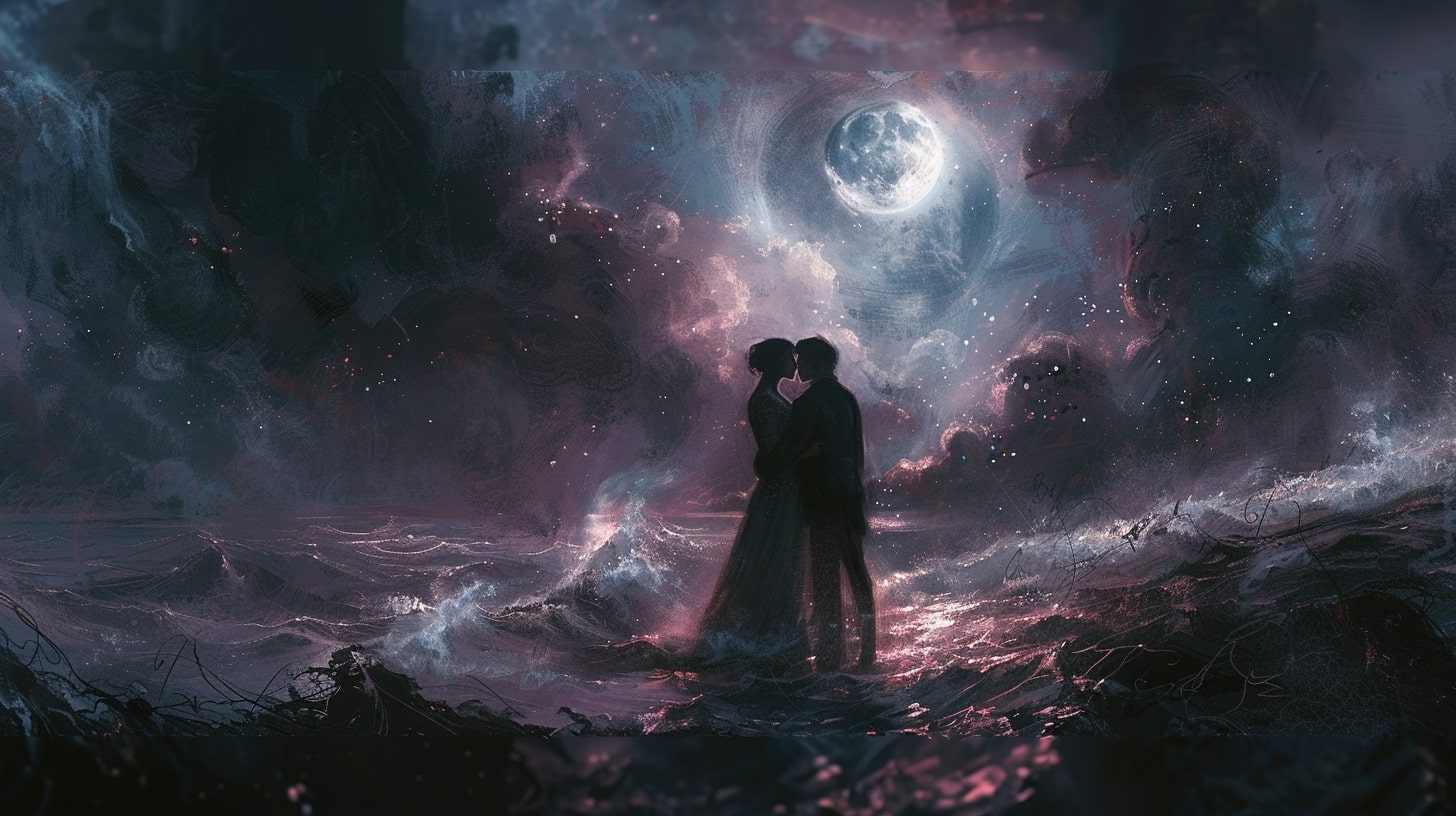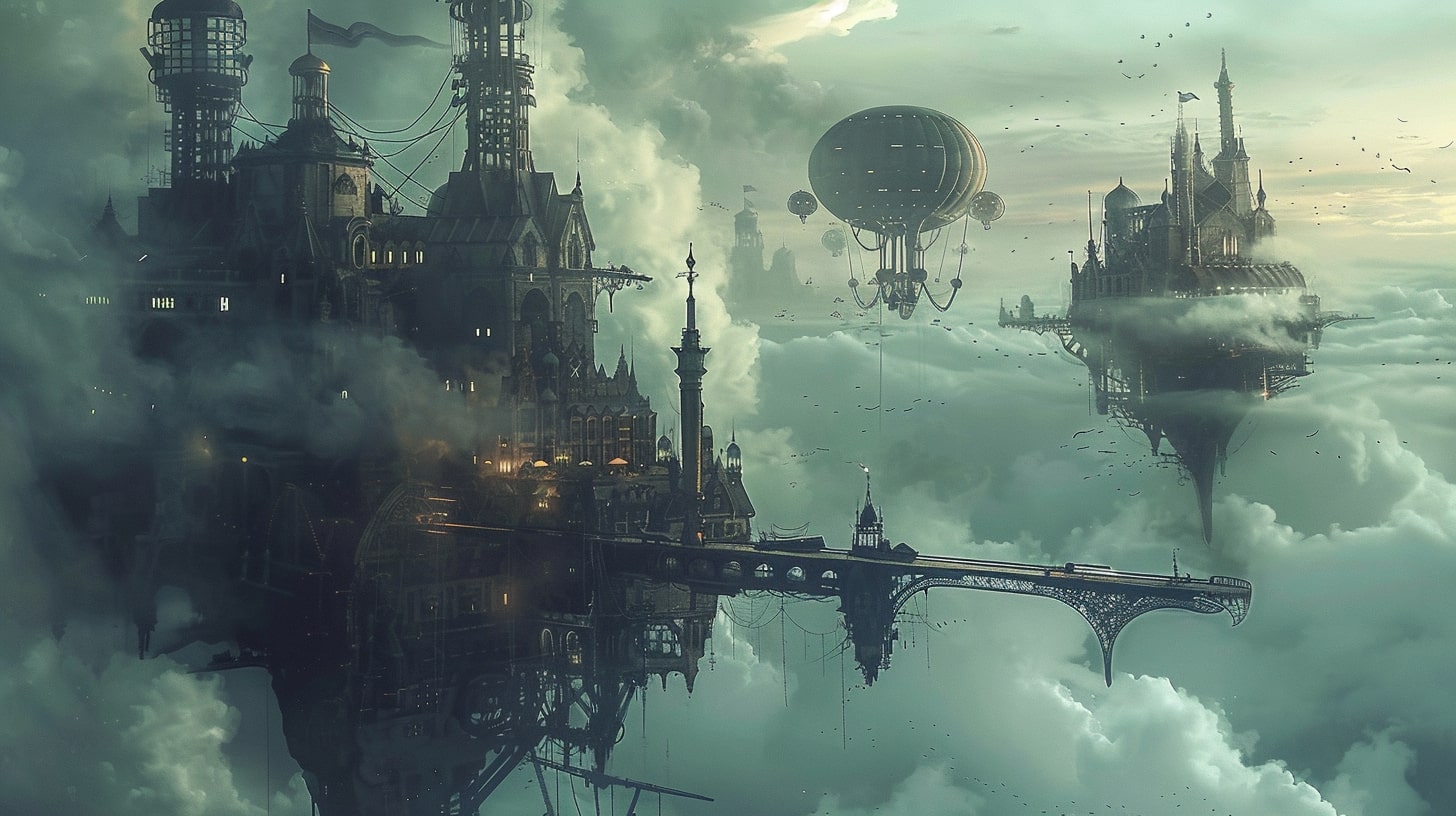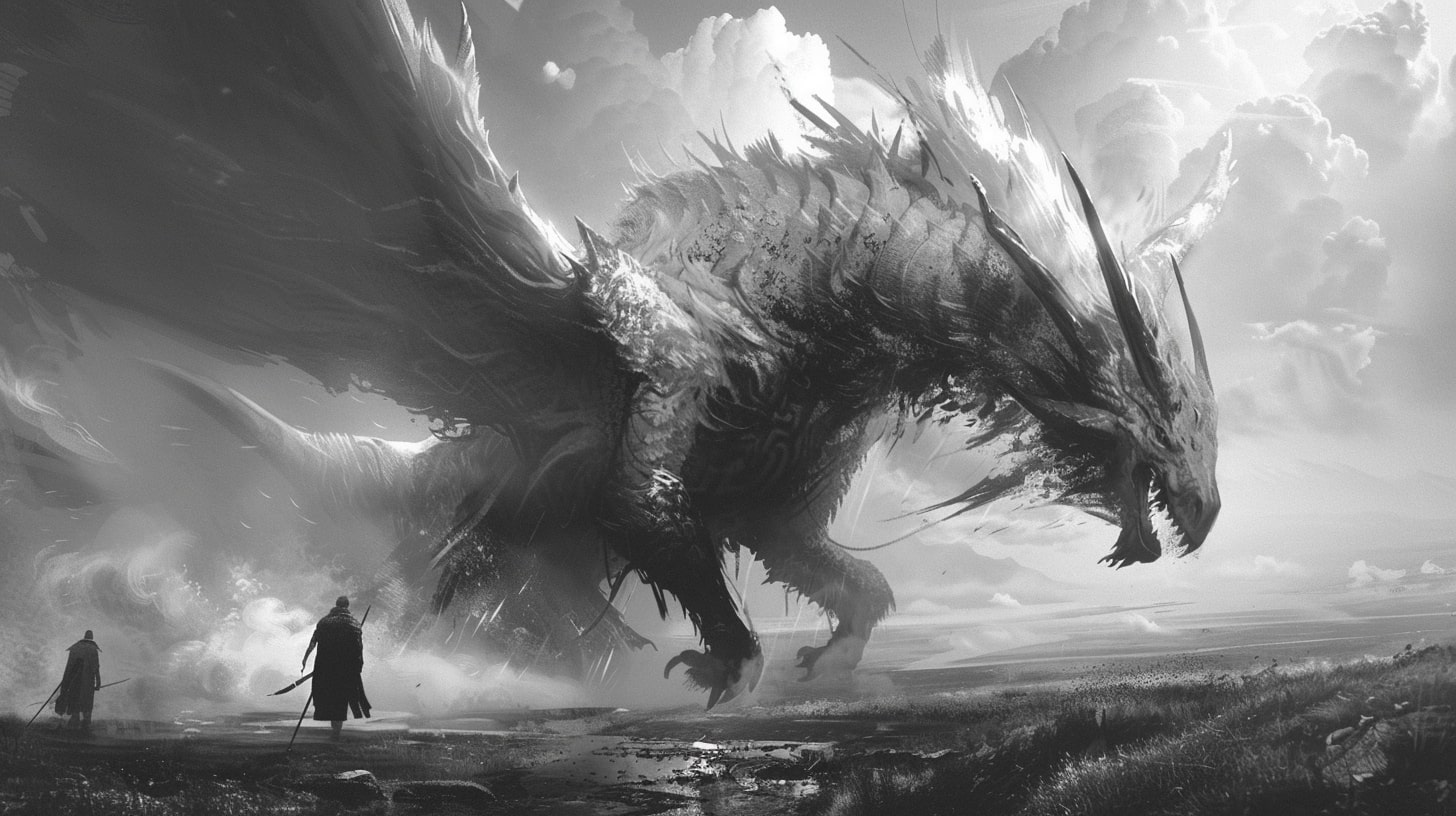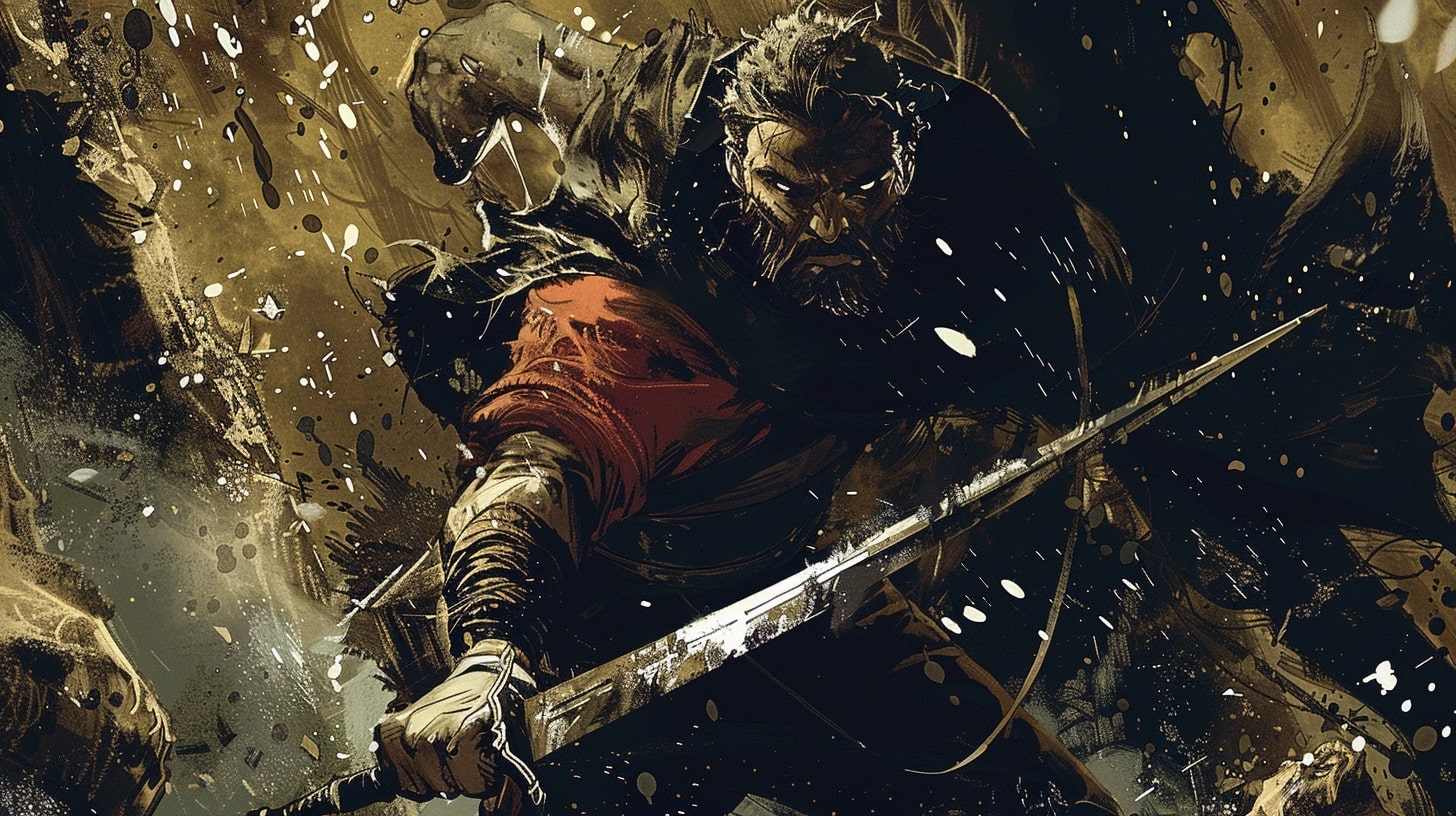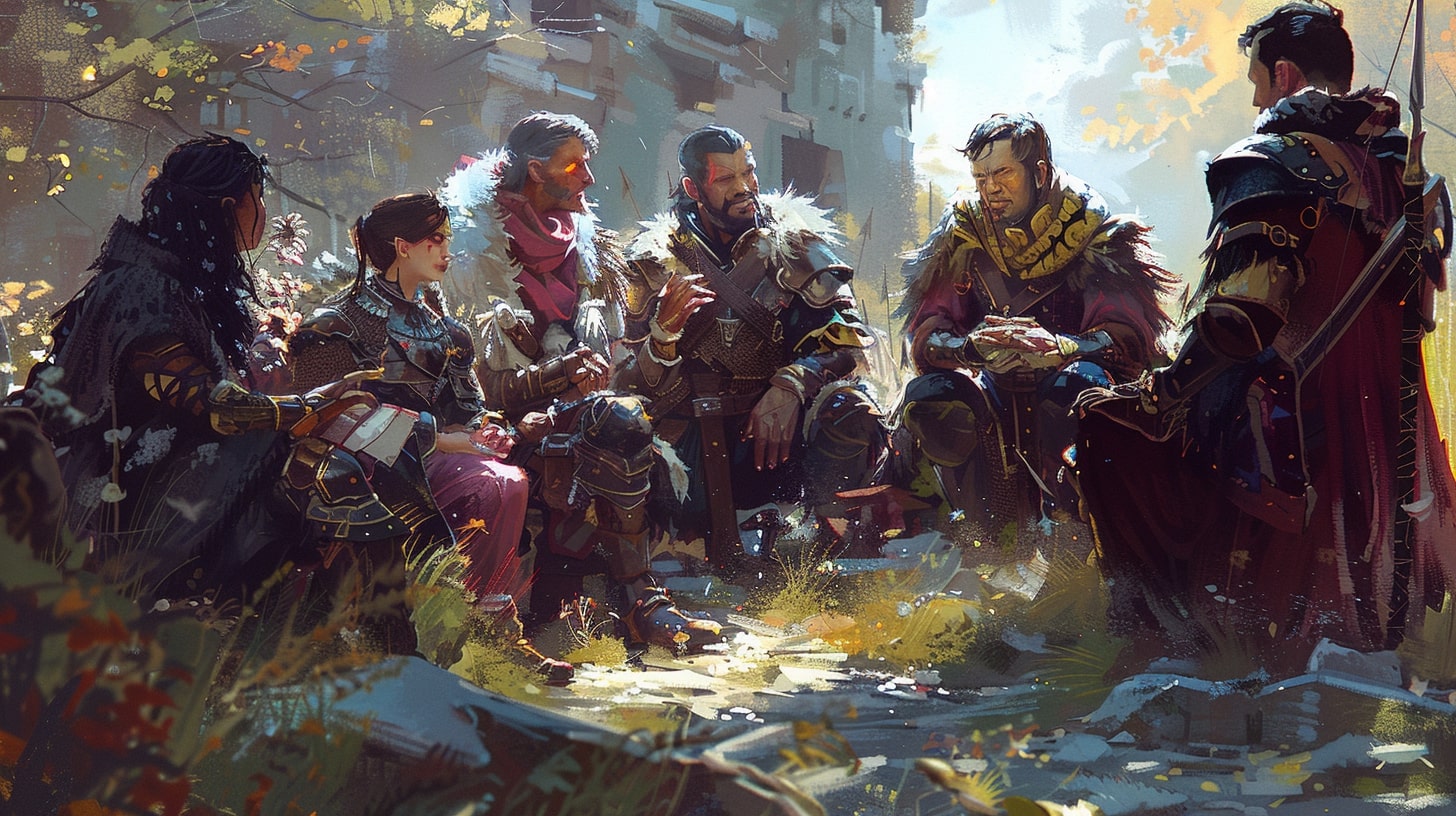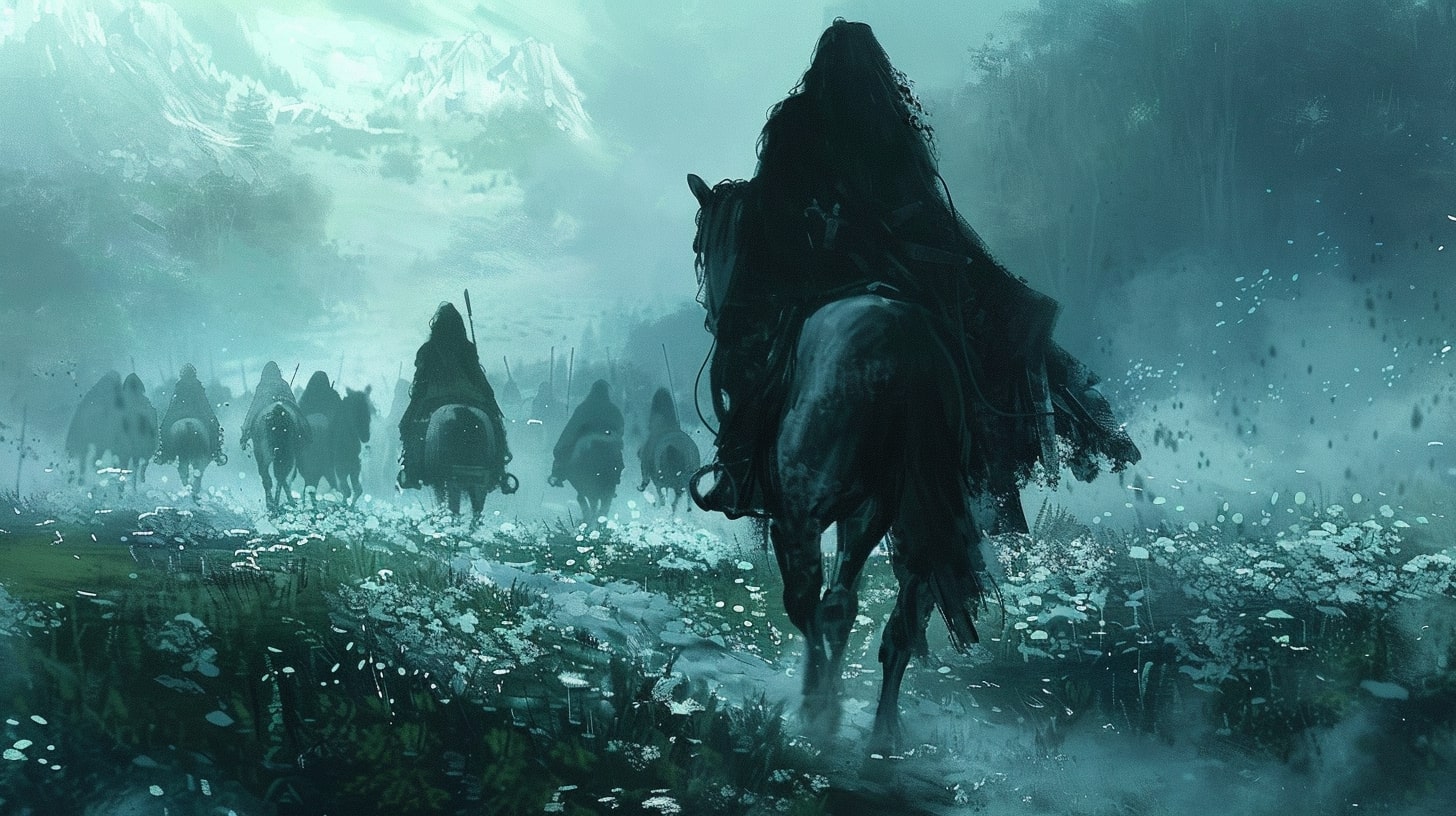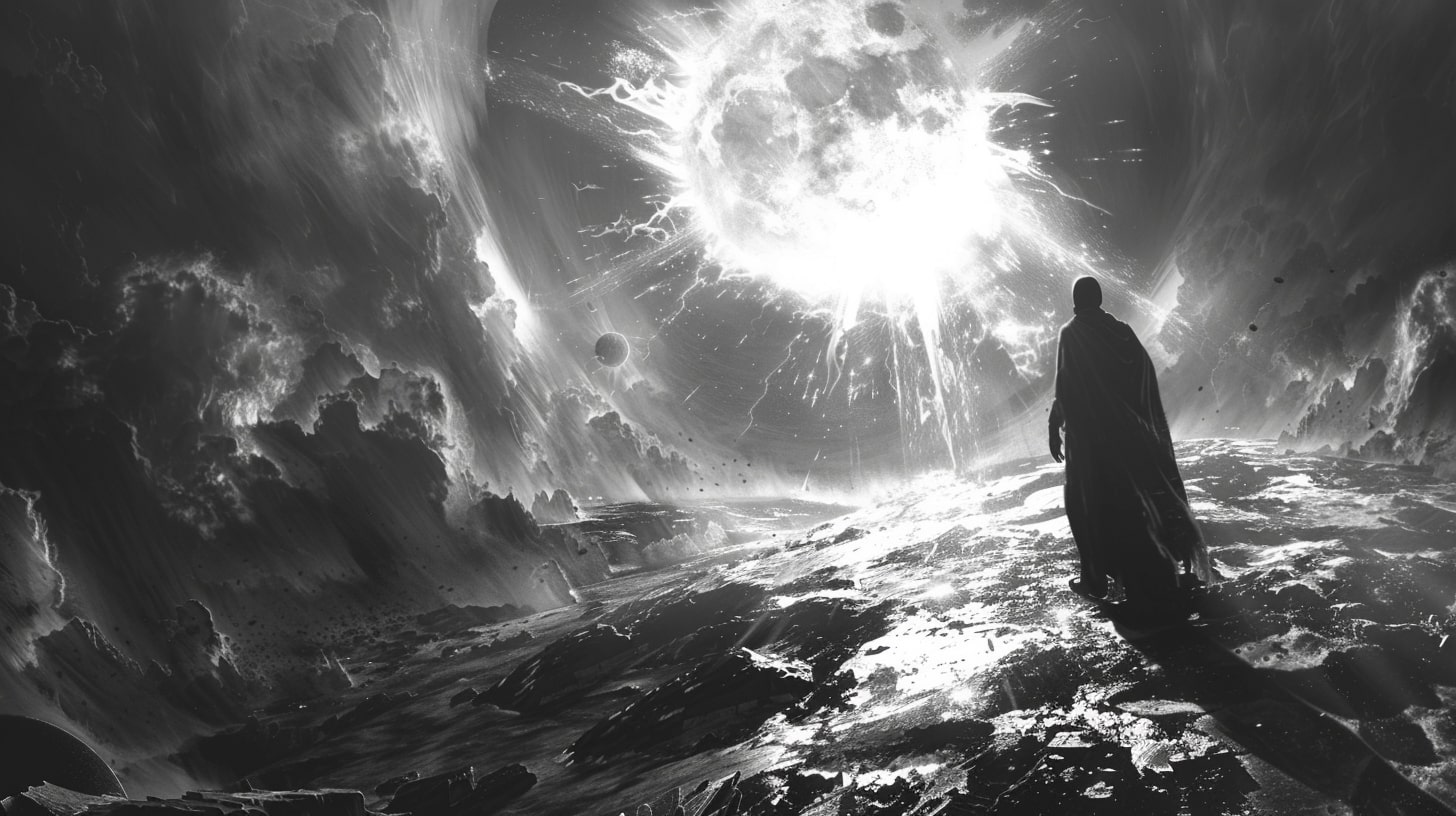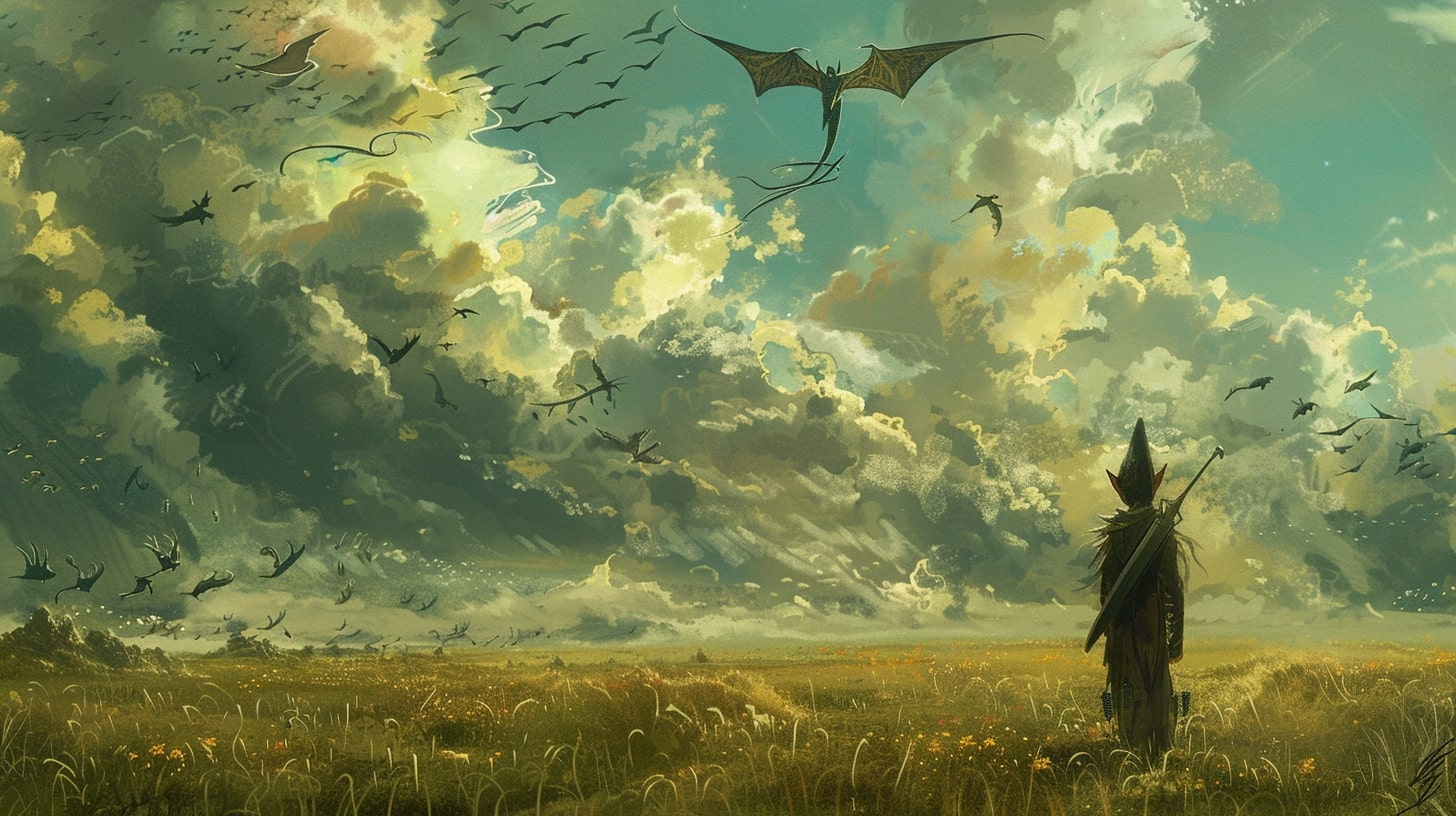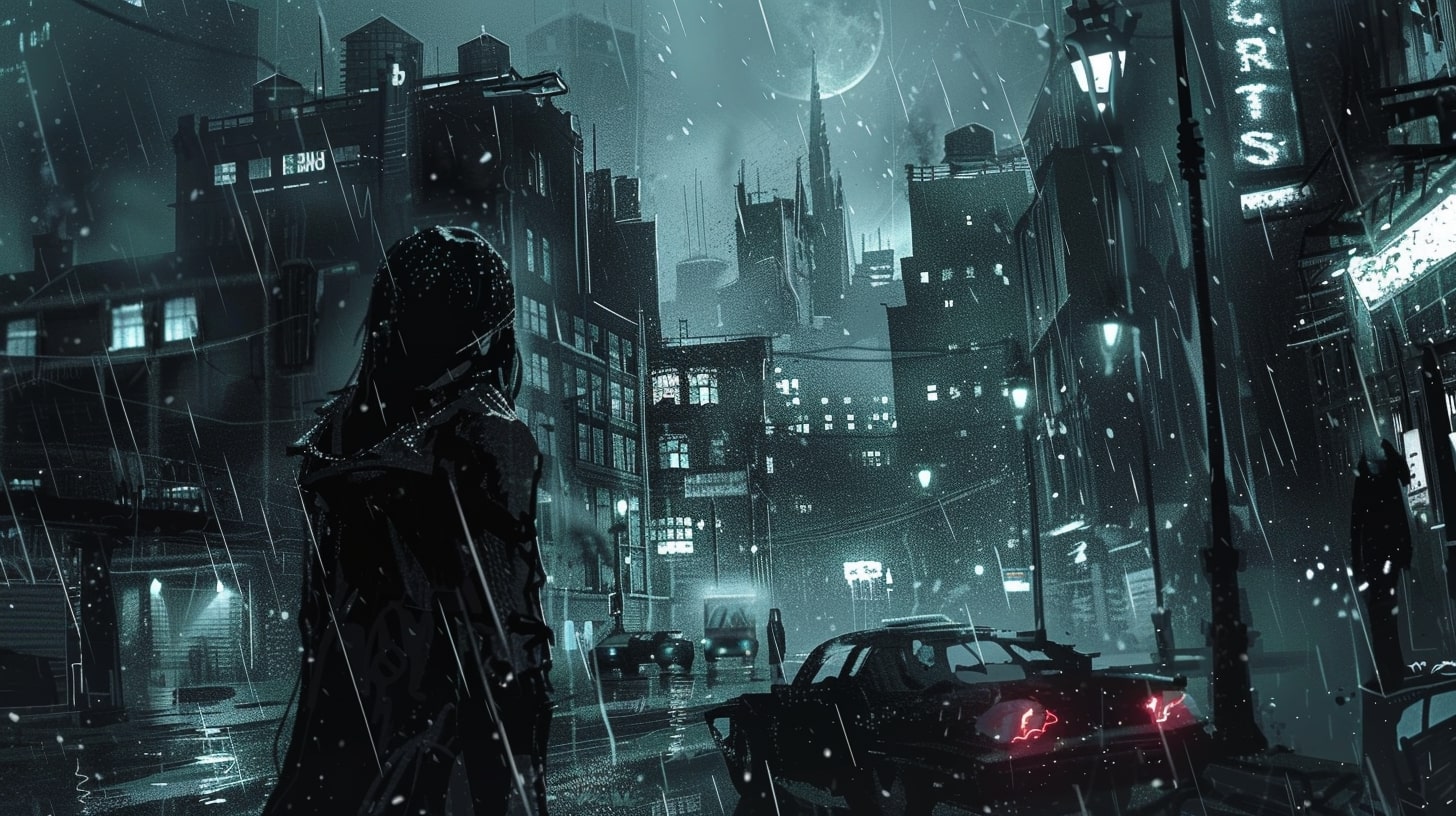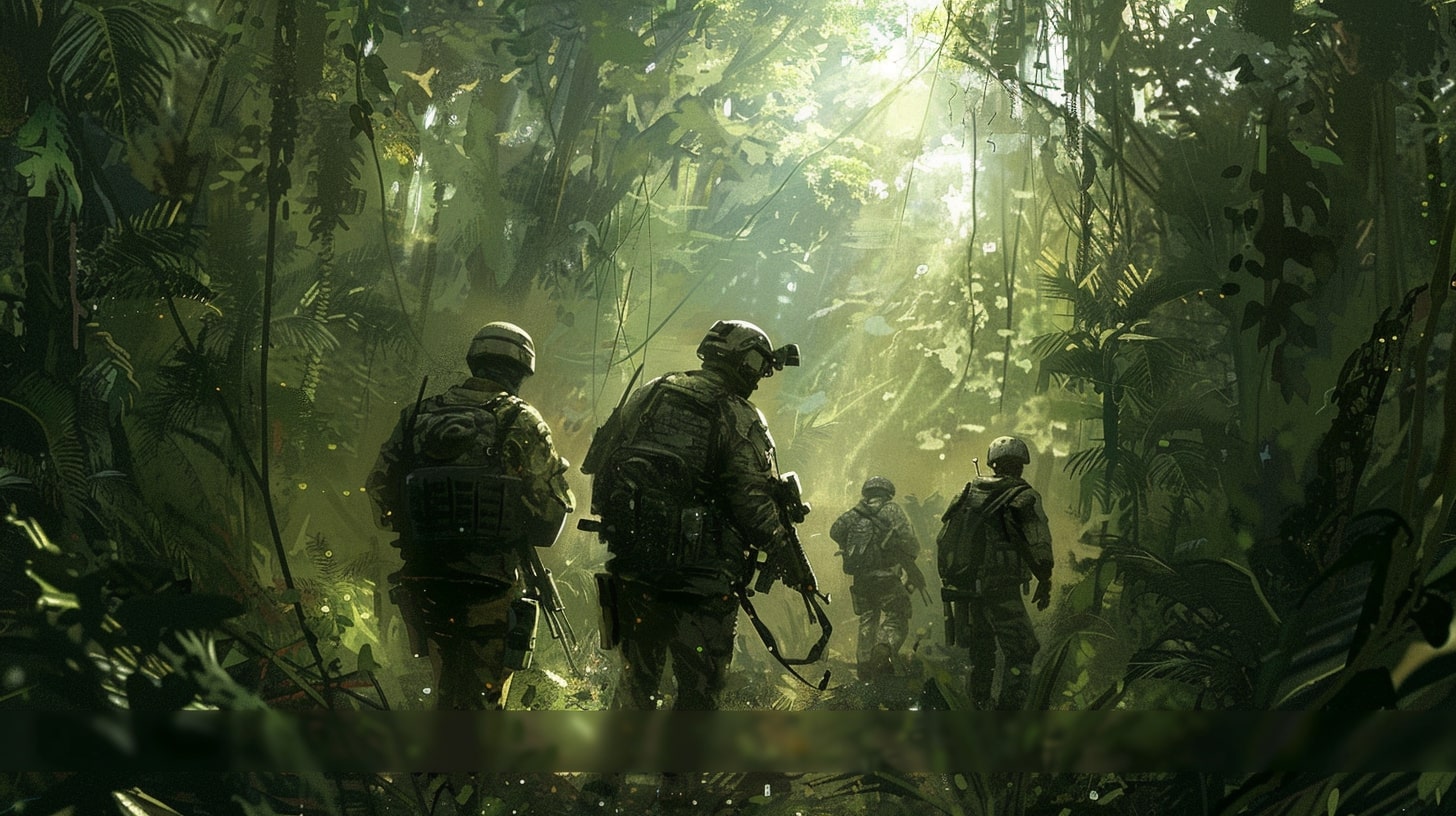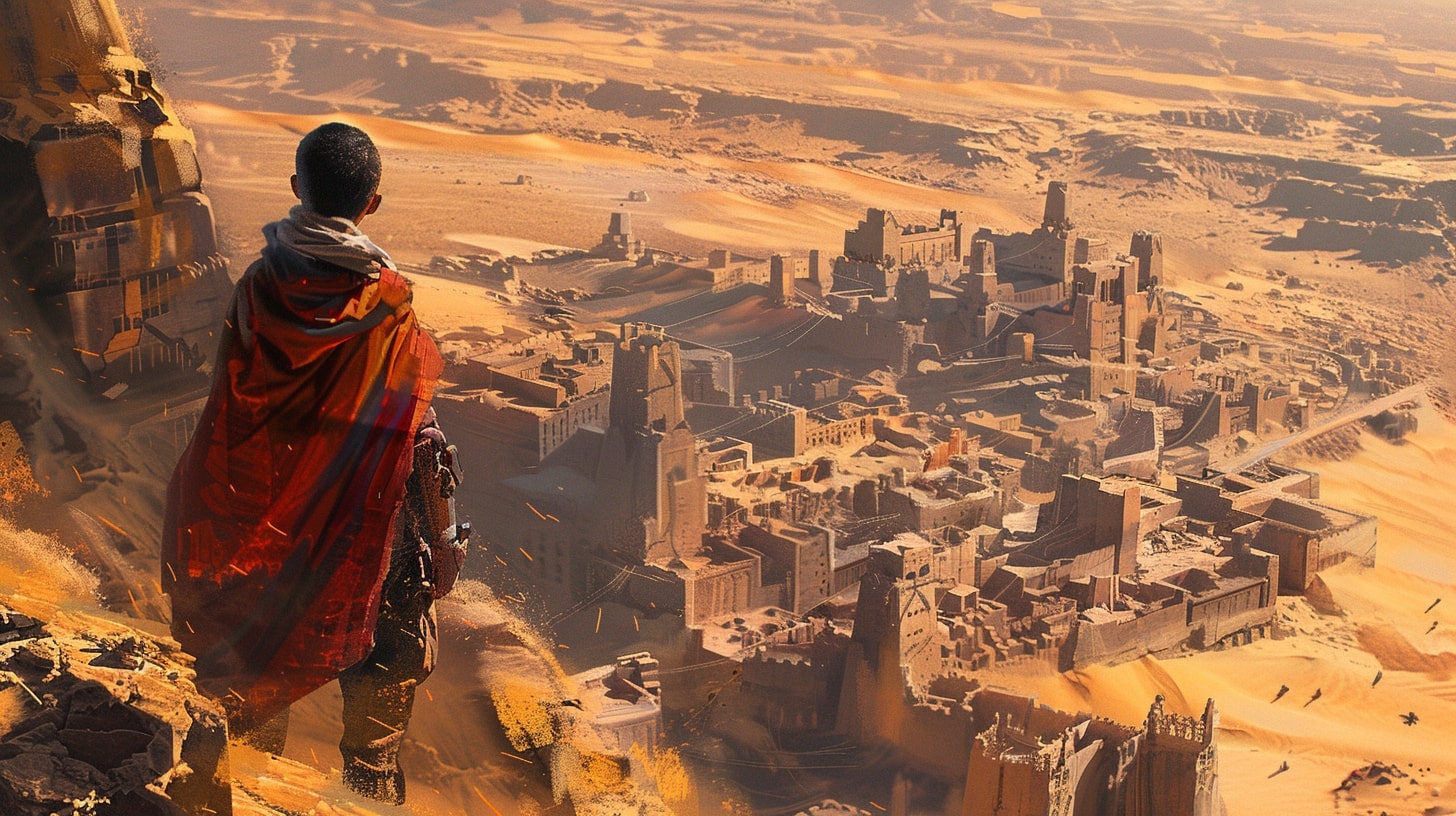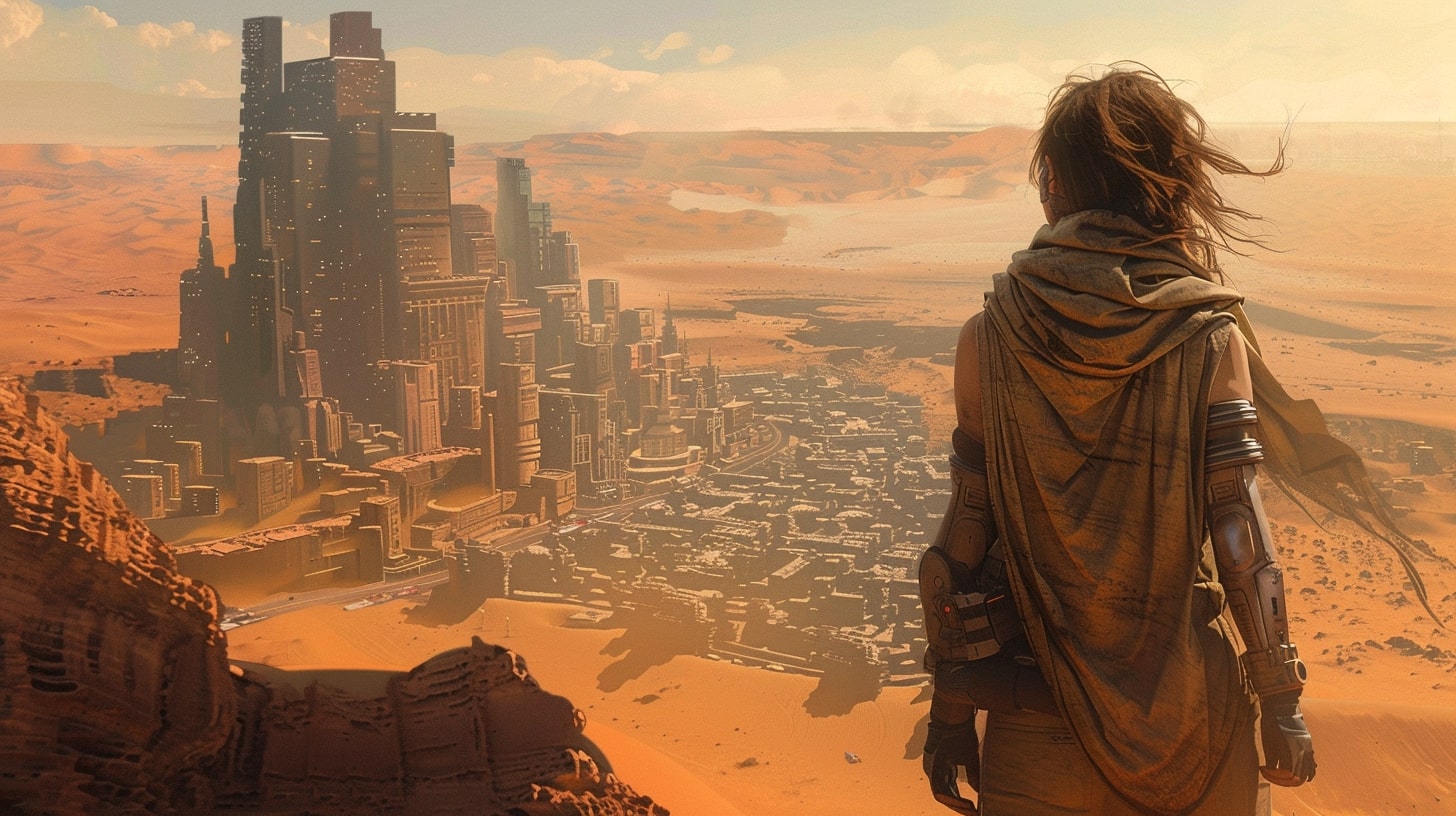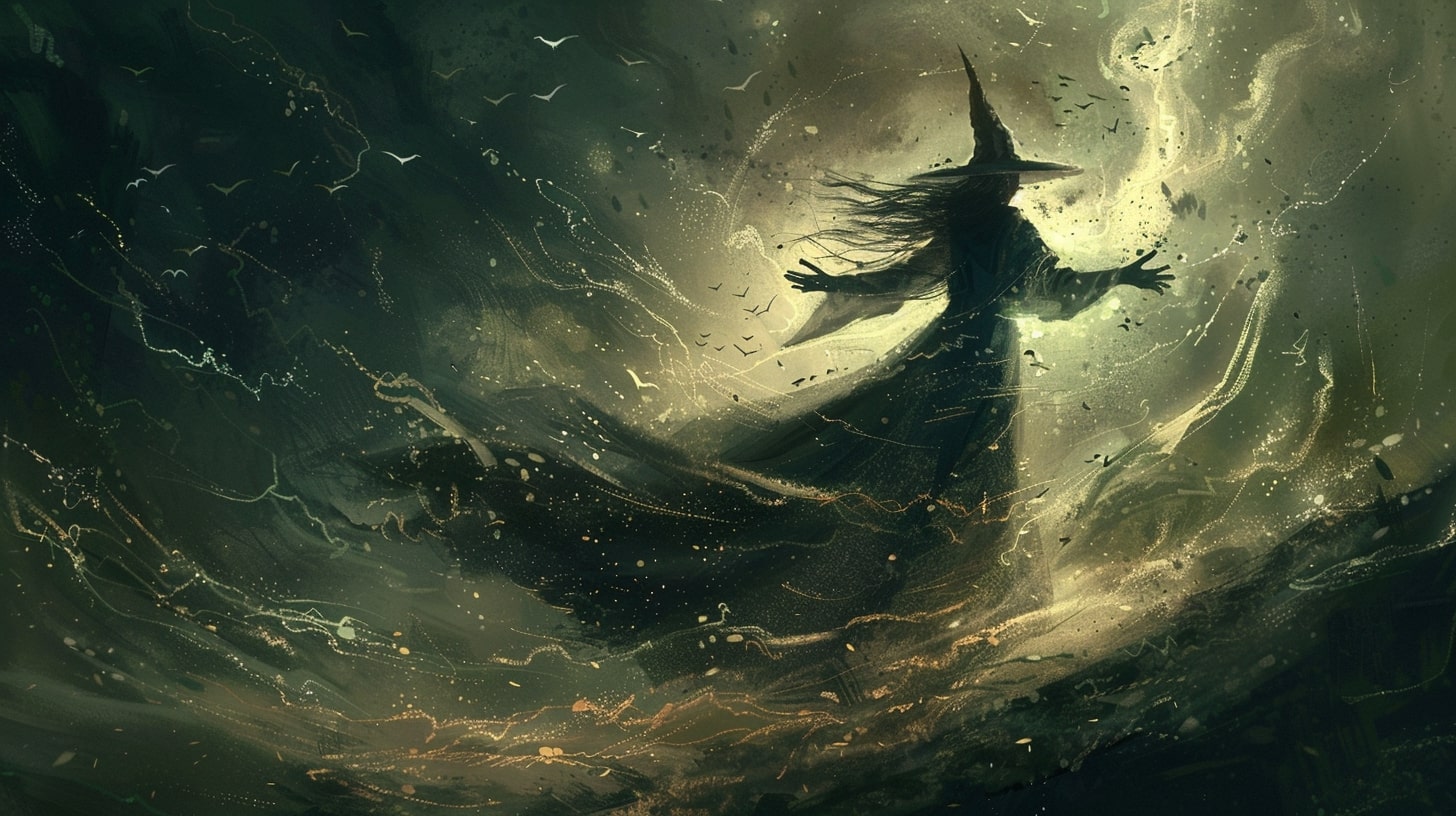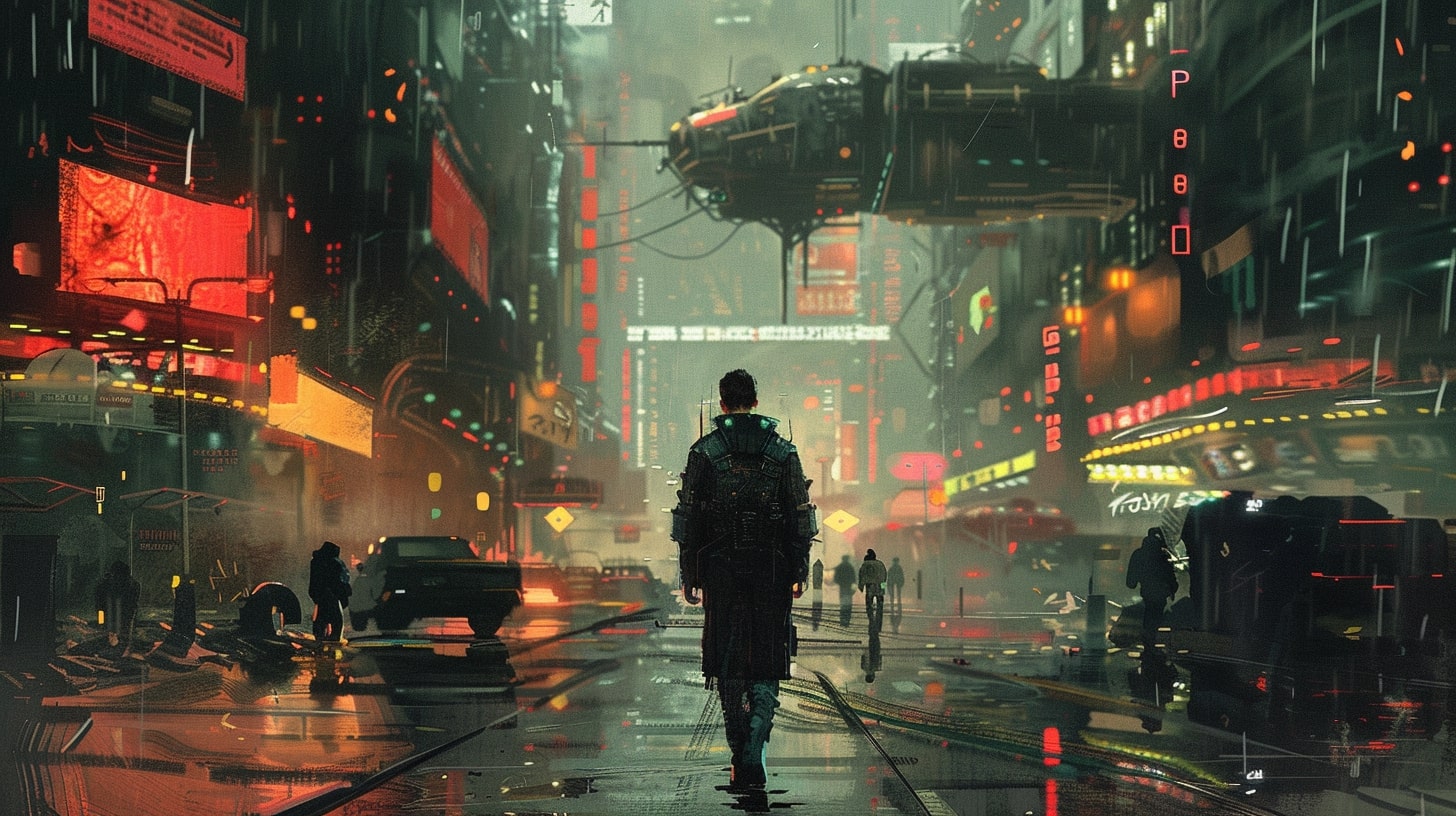Introduction to Cyberpunk Fiction
If you're fascinated by the gritty, high-tech worlds of cyberpunk fiction and want to try your hand at writing it, you've come to the right place.
Writing cyberpunk fiction isn't much different from any other fantasy writing. For some, it's a genre that's easier to relate to than writing high-fantasy while others might struggle.
It really depends on whether or not you listen to Nirvana. I'm just joking.
If you want to master the art of cyberpunk fiction then you've come to the right place. Let's dive in.
What is Cyberpunk?
Cyberpunk is a subgenre of science fiction that emerged in the 1980s. Set in a dystopian future, it combines elements of advanced technology, societal decay, and a distinct punk aesthetic. In a cyberpunk world, powerful corporations often control society, while technology permeates every aspect of life.
The term "cyberpunk" is derived from the combination of "cybernetics" (the fusion of humans and machines) and "punk" (representing the rebellious and countercultural spirit). Cyberpunk stories typically feature anti-establishment protagonists who navigate a complex web of corruption, artificial intelligence, and ethical dilemmas.
Exploring the Themes of Cyberpunk Fiction
Cyberpunk fiction delves into various thought-provoking themes, highlighting the potential consequences of unchecked technological advancement and the impact of corporate dominance. These themes include:
Dystopia and Social Inequality: Cyberpunk worlds often portray a grim future where wealth and power are concentrated in the hands of a few, while the majority struggle to survive in poverty-stricken urban landscapes. This theme explores the disparities between social classes and the impact of such inequality on society.
Human-Machine Interface: In cyberpunk, the line between humans and machines becomes blurred. Characters may have cybernetic enhancements or immerse themselves in virtual reality. This theme examines the implications of merging human consciousness with advanced technology, raising questions about identity, free will, and the nature of humanity.
Surveillance and Loss of Privacy: With the prevalence of surveillance technologies and ubiquitous connectivity, cyberpunk fiction explores the loss of privacy and the potential dangers of a surveillance state. It raises concerns about the abuse of power and the erosion of personal freedoms in a hyperconnected society.
Ethics and Morality: Cyberpunk often confronts ethical dilemmas arising from powerful corporations, government control, and technological advancements. Characters are forced to navigate moral gray areas, making choices that question the boundaries between right and wrong, and the consequences of their decisions.
By immersing yourself in the world of cyberpunk and exploring these themes, you can begin to develop a deeper understanding of what makes cyberpunk fiction so compelling.
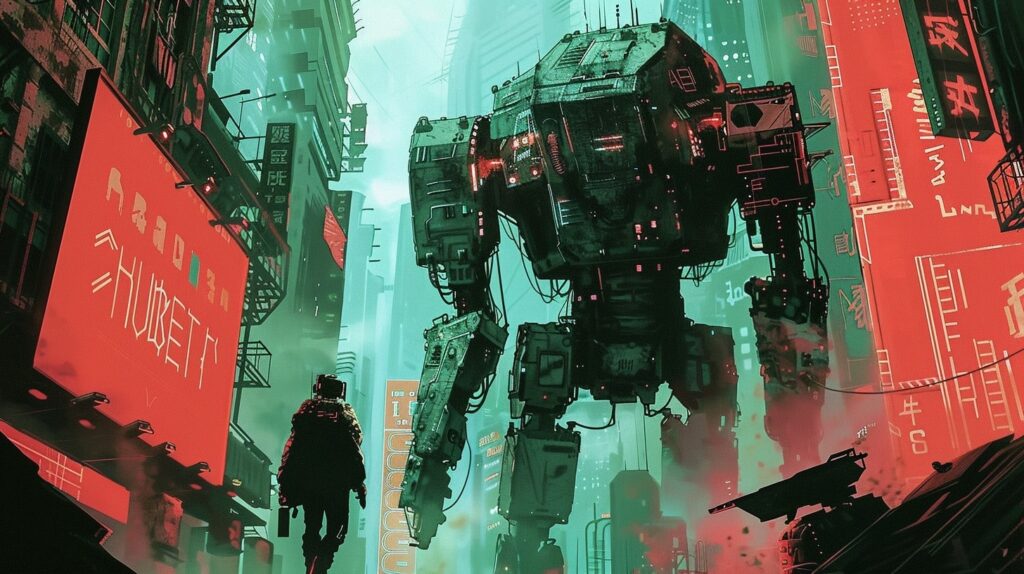
Writing Cyberpunk Fiction: Building the World
In order to write captivating cyberpunk fiction, you must first focus on building an immersive cyberpunk world. This involves creating a futuristic dystopia and incorporating advanced technology. Let's explore these elements in more detail and how you can do better with the worldbuilding aspect of this subgenre.
Creating a Futuristic Dystopia
A fundamental aspect of cyberpunk fiction is the creation of a futuristic dystopia. This dystopian setting serves as the backdrop for the story, emphasizing the dark, gritty, and oppressive nature of the world. To achieve this, you can consider the following:
- Social Inequality: Highlight the vast disparities between the rich and the poor, with powerful corporations and corrupt governments controlling society.
- Urban Decay: Depict crumbling cities, overcrowded slums, and polluted environments, reflecting the decay and neglect of the world.
- Surveillance and Control: Portray a society under constant surveillance, where technology and government entities monitor every aspect of people's lives.
- Crime and Corruption: Showcase a world where crime and corruption thrive, with powerful criminal organizations and morally ambiguous characters.
By creating a vivid and believable futuristic dystopia, you can immerse your readers in the cyberpunk world and make them feel the tension and oppression that permeates it.
Incorporating Advanced Technology
Another crucial aspect of cyberpunk fiction is the incorporation of advanced technology. These technological advancements play a central role in shaping the world and driving the narrative. Consider the following when incorporating technology into your cyberpunk world:
- Cybernetic Enhancements: Introduce cybernetic enhancements such as neural implants, augmented reality interfaces, or artificial limbs. These enhancements blur the line between humans and machines.
- Virtual Reality: Explore virtual reality as a means of escape or as an alternate reality that coexists with the physical world, allowing characters to interact with immersive digital environments.
- Artificial Intelligence: Feature advanced AI systems, from intelligent personal assistants to sophisticated sentient AI entities that have their own motivations and agendas.
- Hacking and Cybercrime: Highlight the presence of hackers and cybercriminals who manipulate and exploit the technology-driven society for their own gain.
By integrating advanced technology into your cyberpunk world, you can create a sense of wonder, danger, and intrigue that captures the essence of the genre.
Remember, when crafting your cyberpunk world, it's important to strike a balance between creating a captivating and believable future while keeping the narrative engaging. By incorporating a futuristic dystopia and advanced technology, you can lay the foundation for a compelling cyberpunk story.

Developing Compelling Characters
To create captivating cyberpunk fiction that resonates with readers, it is crucial to develop compelling characters who embody the essence of the genre. When crafting characters for your cyberpunk story, consider incorporating elements such as anti-heroes and outsiders, as well as exploring complex motivations and conflicts.
Anti-Heroes and Outsiders
In cyberpunk fiction, the protagonist is often an anti-hero, who defies conventional notions of heroism. These characters can be morally ambiguous, operating in the gray areas between right and wrong. They may possess a cynical outlook on society and exhibit rebellious tendencies.
Outsiders are another common archetype in cyberpunk stories. These characters feel alienated from mainstream society and are often marginalized or oppressed by the dystopian world they inhabit. Their unique perspective allows them to challenge the status quo and provide a fresh lens through which readers can explore the cyberpunk world.
When developing your anti-hero or outsider character, consider their backstory, motivations, and how they interact with the cyberpunk society. What drives them to act against the system? How do they navigate the complexities of the futuristic world? By delving into these aspects, you can create characters that resonate with readers on a deeper level.
Complex Motivations and Conflicts
Cyberpunk fiction thrives on complex character motivations and conflicts. Your characters should possess multifaceted desires, shaped by their personal experiences and the oppressive nature of the cyberpunk world. These motivations can range from seeking personal freedom and justice to pursuing power or revenge.
Conflicts in cyberpunk stories often arise from the clash between characters' desires and the oppressive forces of the dystopian society. These conflicts can be internal, as characters grapple with their own values and beliefs, or external, as they face off against powerful corporations, authoritarian governments, or cybernetic entities.
By infusing your characters with intricate motivations and conflicts, you can add depth and tension to your cyberpunk story. This complexity will engage readers, as they navigate the intricate webs of intrigue and challenge the moral dilemmas your characters face.
Remember to ensure that your characters' motivations and conflicts align with the overarching themes of cyberpunk fiction, such as the exploration of identity, the consequences of advanced technology, and the blurred boundaries between humanity and machinery.
As you develop your characters, be sure to refer to our articles on building a fantasy city and developing fantasy characters for additional insights and inspiration. These resources can help you refine your character development process and bring your cyberpunk world to life through rich and compelling individuals.
In the next section, we will explore techniques for crafting an engaging plot that complements the cyberpunk genre.
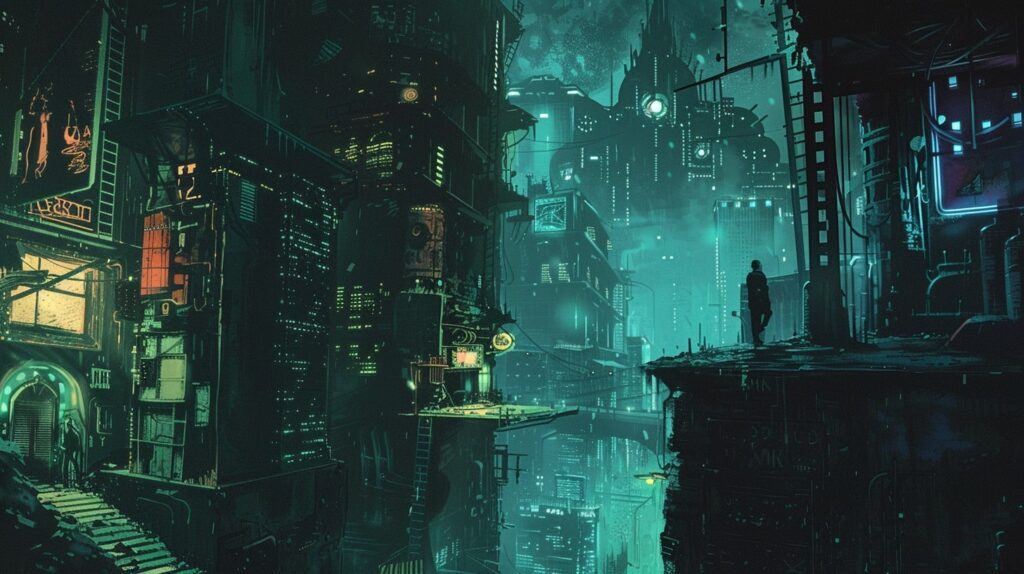
Crafting an Engaging Plot
To create a captivating cyberpunk fiction, you need an engaging plot that keeps readers hooked from start to finish. In the world of cyberpunk, the plot is often driven by high-stakes action and intrigue while seamlessly blending elements of noir and science fiction.
High-Stakes Action and Intrigue
Cyberpunk fiction is known for its fast-paced and high-stakes narratives. Your plot should be filled with thrilling action sequences, intense confrontations, and adrenaline-pumping moments that keep readers on the edge of their seats.
Consider incorporating high-stakes elements such as daring heists, life-or-death missions, and battles against oppressive corporations or government entities. These high-stakes situations should not only test the physical abilities of your characters but also challenge their moral compass and beliefs.
Intertwining your plot with layers of intrigue is also essential. Cyberpunk stories often feature complex webs of conspiracy, betrayal, and hidden agendas. Keep readers guessing by introducing unexpected plot twists, double-crosses, and revelations that keep the story unpredictable and engaging.
Blending Noir and Science Fiction Elements
Blending noir and science fiction elements is a hallmark of cyberpunk fiction. Noir aesthetics bring a sense of darkness, mystery, and cynicism to the narrative, while science fiction elements provide the futuristic backdrop and advanced technology that define the genre.
Incorporate noir elements such as gritty urban settings, morally ambiguous characters, and a sense of moral decay. Use vivid descriptions to paint a vivid picture of the dystopian cityscape, with its towering skyscrapers, flickering neon lights, and rain-soaked alleyways. Emphasize the underbelly of society, where crime, corruption, and the struggle for power are pervasive.
Integrate science fiction elements such as advanced technology, cybernetic enhancements, and virtual reality into your plot. Explore how these technological advancements shape society, influence interpersonal relationships, and create new avenues for conflict and exploration.
By expertly weaving together high-stakes action, intrigue, noir aesthetics, and science fiction elements, you can create a compelling and immersive plot that captures the essence of cyberpunk fiction. Remember to keep readers engaged with unexpected twists, thought-provoking dilemmas, and a sense of urgency that propels the story forward.
Continue your journey into cyberpunk fiction by exploring the next section on Writing Style and Tone, where we delve into the importance of vivid descriptions and the delicate balance between darkness and hope in this genre.
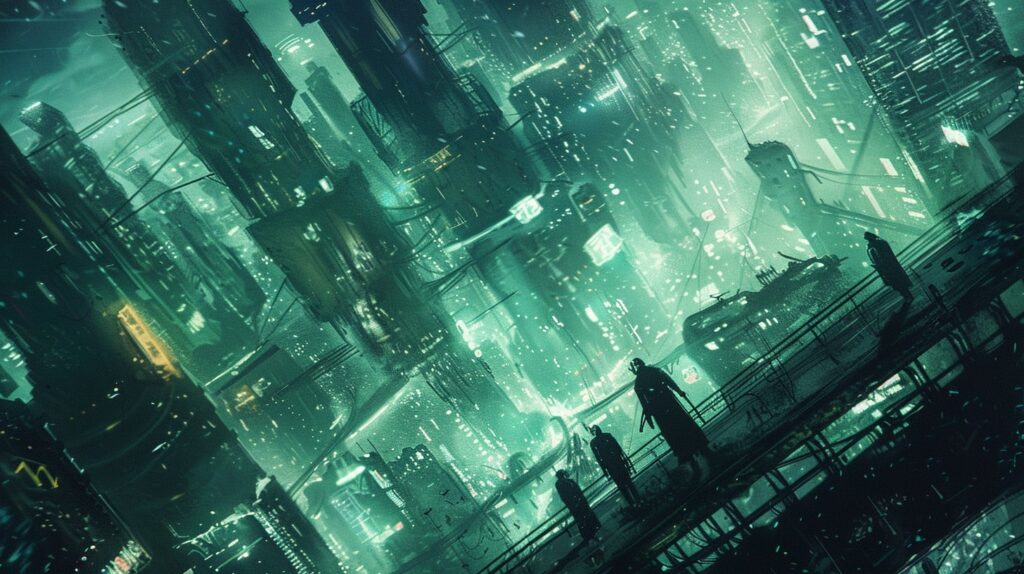
Writing Style and Tone
When it comes to writing cyberpunk fiction, the writing style and tone play a crucial role in immersing your readers into the gritty and futuristic world you've created. Here are two important aspects to consider:
Vivid Descriptions and Imagery
In cyberpunk fiction, vivid descriptions and imagery are essential for bringing the futuristic setting to life. Paint a detailed picture of the neon-lit streets, towering skyscrapers, and bustling cybernetic marketplaces.
Use descriptive language to evoke the sights, sounds, and smells of this dystopian world. By capturing the essence of the cyberpunk aesthetic, you transport your readers into a world that feels both familiar and alien.
For example:
The rain-slicked streets glistened under the flickering neon glow, reflecting the holographic advertisements that danced above the bustling crowd. The air hummed with the sound of hovercars zipping through the smog-filled sky, while the scent of fried noodles and synthetic oil wafted from the street food stalls.
Balancing Darkness and Hope
Cyberpunk fiction often explores themes of darkness, oppression, and the consequences of unchecked technological advancements. However, it's important to strike a balance by infusing moments of hope and resilience into your narrative. Showcasing the indomitable spirit of your characters and their determination to overcome adversity can create a more engaging and emotionally resonant story.
Remember, cyberpunk fiction is not just about bleakness; it also offers a reflection on the human condition and the potential for change. This blend of darkness and hope adds depth and complexity to your storytelling.
For example:
In the midst of the oppressive megacorporations and totalitarian governments, a small group of hackers clandestinely work to expose the truth and fight for the freedom of the oppressed. Their acts of defiance may seem insignificant, but they serve as beacons of hope in the face of a dystopian reality.
By incorporating vivid descriptions and maintaining a careful balance between darkness and hope, you can effectively capture the essence of cyberpunk fiction and create a compelling and immersive reading experience for your audience.
Continue your exploration of the cyberpunk genre by studying real-world technology and societal trends, as well as delving into cyberpunk literature and films. For more writing tips and techniques, check out our articles on writing cyberpunk noir and outlining a fantasy novel.
Research and Inspiration
To write compelling cyberpunk fiction, it's important to immerse yourself in the genre and gather inspiration from various sources. Conducting thorough research will not only enhance your understanding of the real-world technology and societal trends that shape the cyberpunk genre but also give you valuable insights into the works of other cyberpunk authors.
Studying Real-World Technology and Societal Trends
To create a believable and immersive cyberpunk world, it's crucial to stay informed about the latest advancements in technology and how they impact society. Pay attention to emerging technologies such as artificial intelligence, virtual reality, bioengineering, and surveillance systems.
Understanding the potential implications and ethical dilemmas surrounding these technologies will add depth and realism to your cyberpunk narrative.
Additionally, explore current societal trends and issues that are prevalent in our world. Cyberpunk often reflects the concerns and anxieties of our modern society, such as corporate power, income inequality, environmental degradation, and loss of privacy. By examining and analyzing these issues, you can incorporate them into your cyberpunk story in thought-provoking ways.
Exploring Cyberpunk Literature and Films
One of the best ways to gain inspiration and insights into the cyberpunk genre is to delve into the works of renowned cyberpunk authors and filmmakers. Read classic cyberpunk novels such as William Gibson's "Neuromancer," Philip K. Dick's "Do Androids Dream of Electric Sheep?," and Neal Stephenson's "Snow Crash."
Analyze their writing styles, character development, and world-building techniques to enhance your own writing.
In addition to literature, explore cyberpunk films and television series like "Blade Runner," "The Matrix," and "Ghost in the Shell." These visual mediums can provide valuable visual references and inspire your imagination when crafting your cyberpunk world.
By studying real-world technology, societal trends, and immersing yourself in cyberpunk literature and films, you will be equipped with the knowledge and inspiration needed to write captivating cyberpunk fiction. Remember to infuse your own unique ideas and perspectives into your writing, creating a fresh and engaging narrative that captivates your readers.

